Neil Sharpson's Blog
November 26, 2025
Son of the White Mare (1981)
I will probably never watch this movie again.
Not because it is bad.
Because the experience of watching Son of the White Mare again could never top the experience of watching it for the first time.
And you know what’s crazy? This is…drumroll please…my final reader’s request. And the reason I left this one to last was because the requester simply asked me to review “something Eastern European” and I just chose this because it looked interesting. I picked this one almost at random.
And it ended up being…well, we’ll get to that.
Son of the White Mare, (or Fehérlófia in its native Hungarian) is a 1981 film by filmmaker Marcell Jankovics, who created the first feature length Hungarian animated film, Johnny Corncob. He also, apparently, worked with Disney on Kingdom of the Sun, the abortive first attempt at creating The Emperor’s New Groove. And damn, while I wouldn’t give up Groove for anything, I do really want to see what Jankovics would have cooked up.
Anyway, White Mare is an adaptation of a narrative poem published in 1862 by László Arany, itself based on ancient Eurasian folktales. When it was initially released, it flopped hard and even to this day it’s something of a polarising film in its homeland. Outside of Hungary, however, it’s almost universally acclaimed, particularly within the indie animation space. I’d bet good money that this movie is shown to every animation student at CalArts because I kept seeing images I recognised from Gravity Falls, Steven Universe and Adventure Time.
It’s a hugely influential film, but not necessarily an easy watch. That’s not to say that it’s disturbing in its subject matter, or that it’s a complicated film to follow. In fact, the story is incredibly simple, just about the simplest type of story you can tell: a prince goes on a quest to rescue princesses and slay dragons.
The movie begins with a white mare running through a dark forest being chased by mysterious, shadowy beings.
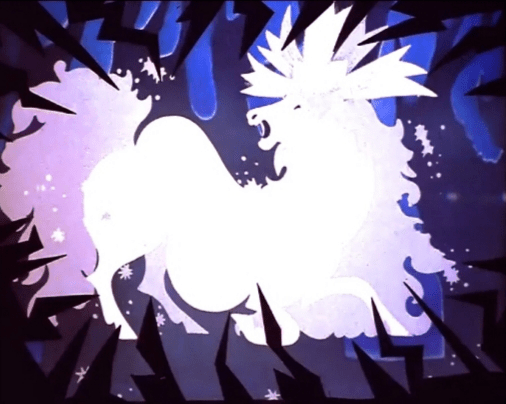
She escapes and gives birth to a boy that she names Treeshaker and tells him a story of the Forefather and the Queen of Heaven who had three sons.
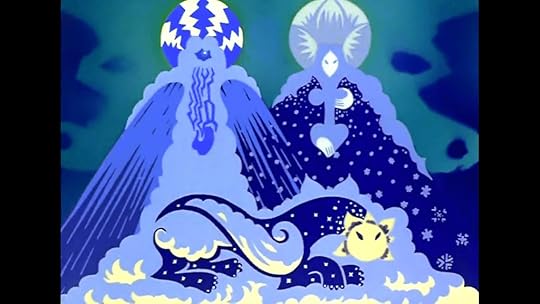 New Tattoo Ideas: The Movie
New Tattoo Ideas: The MovieThe sons were lonely and so the Forefather created three princesses to be their brides. But the princesses were too curious and freed the dragons that were chained in the dungeon beneath the world. The dragons broke free, took over the world and took the three princesses for their own. So, when he comes of age, Treeshaker goes on a quest, meets his two brothers, teams up with them, and eventually rescues the three princesses and defeats the three dragons.
See what I mean? Very simple story. However its imagery is so surreal, so visually dense and so laden with symbolism that you have to focus to avoid just drowning in it.
Most traditional animation uses static backgrounds, with the characters animated over them. Jankovics instead treats the backgrounds and characters as one and the same, animating them both, with both planes running into each other. It creates an incredible, surreal, dreamlike effect that is like nothing I’ve ever seen in either Western or Asian animation. It’s why, even with a plot simple enough that it could be memorised and told around a campfire, you sometimes lose track of what’s going on if you’re not paying attention.
This was, at least partially, by necessity. Hungary in the eighties was controlled by a despotic government intent on silencing and controlling all possible dissent.
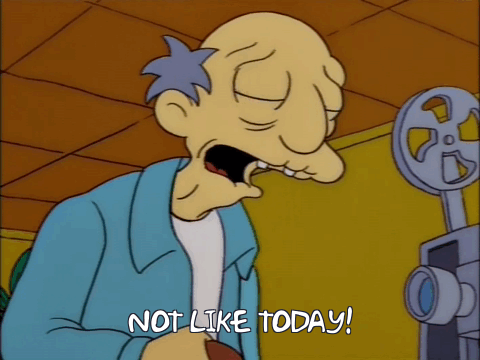
Therefore, if Jankovics did intend this as a critique of the communist regime, he would have to hide it under a thick layer of symbolism for his own personal and professional safety.
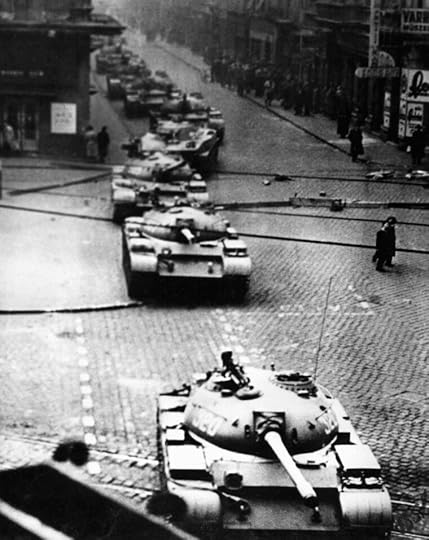
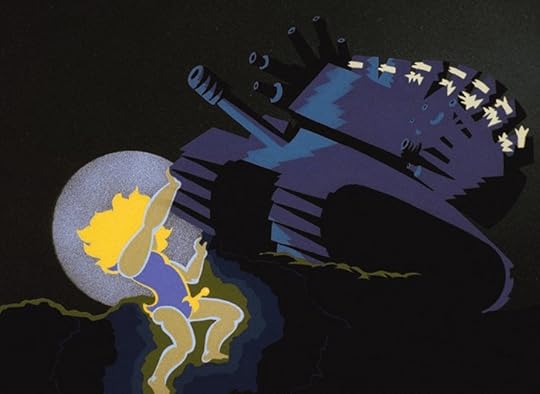
This ambiguity has lead to criticism that the movie is ultimately just a visual showcase with no deeper thematic weight beyond its visuals.
To which I say, even if that was true, have you SEEN the visuals?
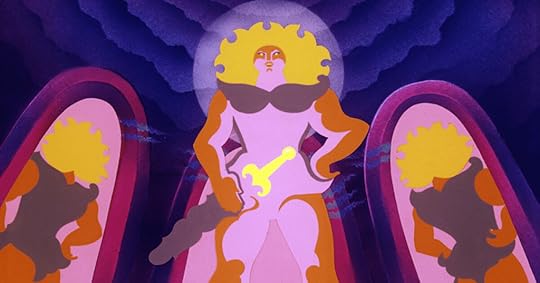
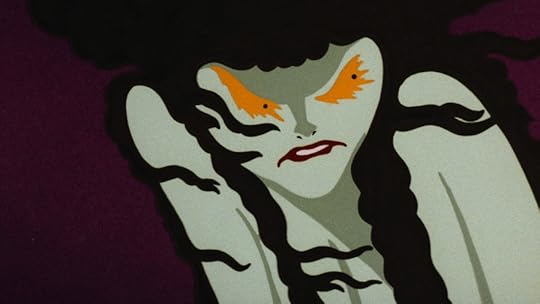
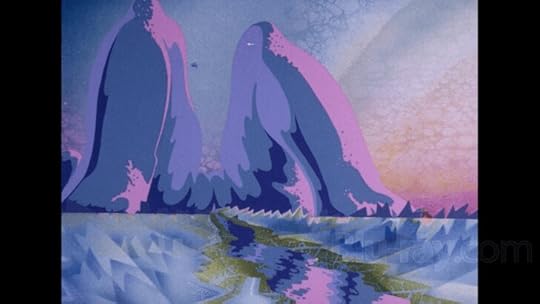
I feel like I’m burying the lede here, somewhat.
This is my new favourite animated film.
It is like nothing I have ever seen.
I watched this with my eyes like saucers and my jaw on the floor.
If you’ve never seen it, I urge you to see it with every fibre of my being.
***
Let’s just say that my appreciation for Hungarian animation has increased by around infinity percent from my last encounter. This is a movie that is unique, so visually beautiful, so utterly without peer in what it is trying to do with the medium of animation that finding fault with it seems pointless. To find fault, you’d have to compare it to something equivalent, and there is nothing equivalent.
It stands alone, in every sense.
Which is, why, after thirteen and a half years of doing this blog, I’m breaking a cardinal rule.
FINAL SCORE: 100%
NEXT UPDATE: As per usual, I’ll be taking December off to focus on writing. I’ll have the usual Christmas wrap up and then see you all 08 January 2026 for the next review.
NEXT TIME: God, fifties movie posters went so hard.
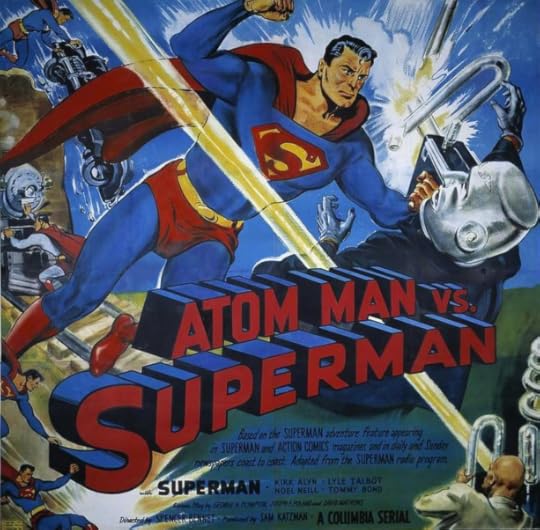
November 17, 2025
New York Public Library Interview and New Podcast Episode
Hey everyone! Firstly, apologies for the delay with this episode, we were beset with all manner of plagues and misfortunes (Esther literally couldn’t speak for weeks). How long did this episode take us to upload? So long that when we recorded it there was a heatwave on. That, incidentally, is why you’ll hear me say that Tony Jay voiced Quasimodo and not Frollo in The Hunchback of Notre Dame, because my brains were melted goop. Anyway, this episode is about landmark Canadian CGI series Reboot, and you should give it a listen.
ALSO!
I’ll be doing an online interview with the New York Public Library at 4pm Eastern on the 2nd of December, talking about The Burial Tide. If any of you are in the parish and want to join in, you can register HERE.
November 13, 2025
The Fantastic Adventures of Unico (1983)
Back around the time the first eukaryotic organisms were developing on the Earth’s sea floor, I coined the term “Tar and Sugar Movies” to describe the earliest films of the Walt Disney Animated Feature canon. I chose the name in reference to the often jarring tonal shifts between cloying cutsiness and shocking darkness of those films. In retrospect though, I think I got it wrong. The true Golden Age of the Tar and Sugar aesthetic was not the late thirties and forties, but the nineteen eighties.
Here is the typical eighties cartoon experience:
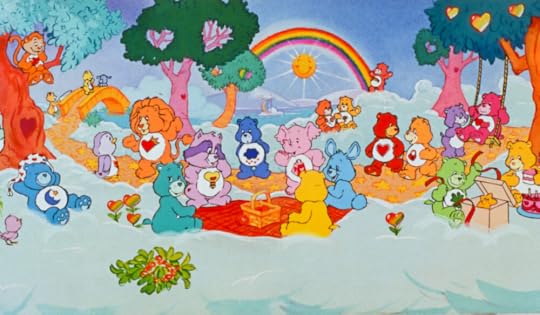 “Golly Gee! This sure is a fun picnic! I just hope that mean ol’ Lord Hexxodrexx doesn’t show up to spoil everything.”
“Golly Gee! This sure is a fun picnic! I just hope that mean ol’ Lord Hexxodrexx doesn’t show up to spoil everything.”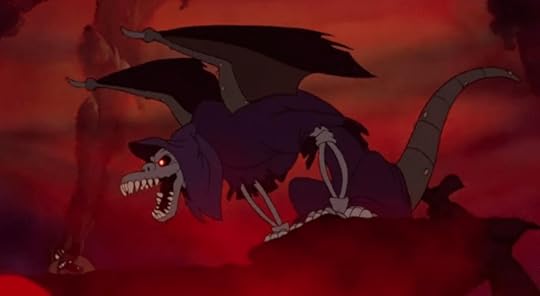 “I HAVE COME TO DEVOUR YOUR FUCKING SOULS!!! GRAAAAAAAA!!!”
“I HAVE COME TO DEVOUR YOUR FUCKING SOULS!!! GRAAAAAAAA!!!”And I think, with today’s movie, I may have found the ultimate Tar and Sugar movie. And, as in most things in this life, they do it better in Japan.
I don’t have to introduce Osamu Tezuka by this point, do I? Born in 1920s Osaka, created manga and animé as we know it, the Japanese Walt Disney, one of the most influential animators of all time you know all this. He was also quite possibly one of the most prolific creators in history, writing and drawing well over 700 manga series in his lifetime encompassing virtually any genre you could think of and targeted at every possible age demographic. The basis for today’s movie was the children’s manga Unico, about a cute little unicorn who has magical powers that he uses to bring happiness and joy to everyone he meets.
Well, I’m sure there’s no way that could possibly take a dark turn.
 “YOUR SOULS!!!”
“YOUR SOULS!!!”This movie takes two different Unico storylines and tries to amalgamate them into a single narrative. That “tries” should probably tip you off as to how elegantly it succeeds in that but hey ho.
We begin with the birth of of Unico who is, the narrator assures us, a baby unicorn.
Well, who are you going to believe, the narrator or your lying eyes?
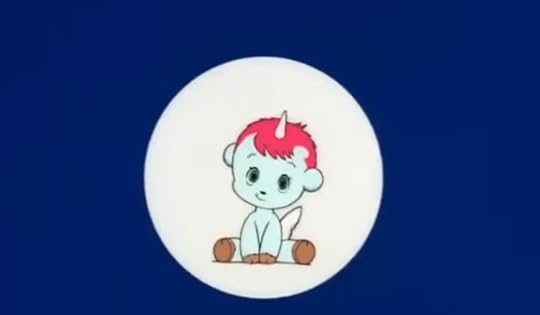 Here’s the thing. Tezuka could draw horses. This was a choice.
Here’s the thing. Tezuka could draw horses. This was a choice.We get a little song which explains that Unico travels across the world bringing peace and joy and joyness to everyone.
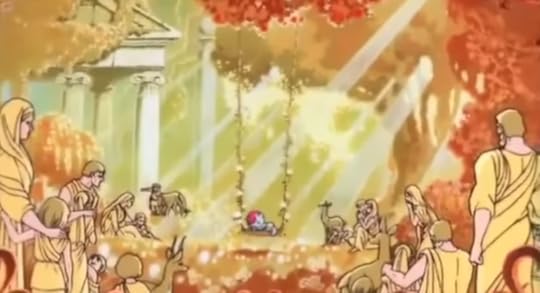 He is the Messiah!
He is the Messiah!But the gods are unhappy. They think that only they should get to decide when people are happy and so they resolve to murder Unico.
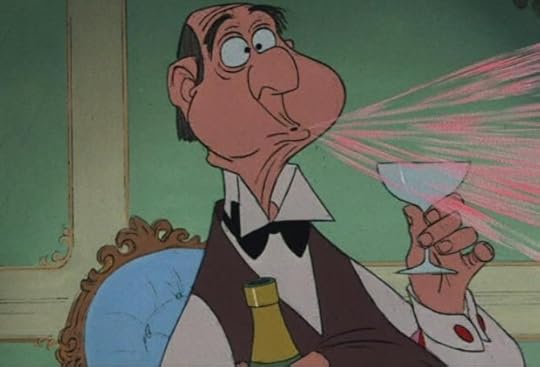
Realising that killing a baby unicorn who does nothing but spread peace and joy would be a public relations nightmare they summon the West Wind to kidnap Unico and exile him somewhere where he can never return. The West Wind takes pity on Unico however, and instead leaves him abandoned on a desolate barren wasteland devoid of life where time itself seems to have died.
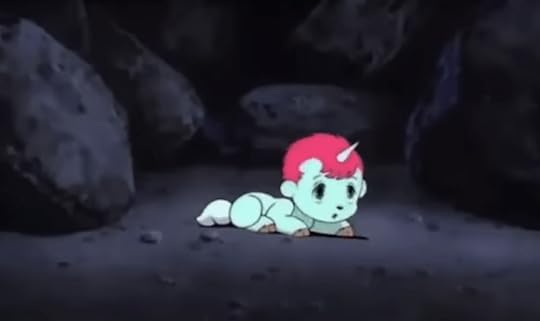 “Why am I in Mullingar?”
“Why am I in Mullingar?”Unico wanders around this wasteland for a bit looking for someone to teach about the magic of friendship in his sweet little voice. It was quite a shock for me to learn who actually voices him.
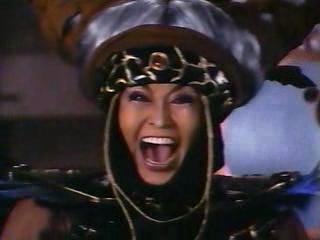 Damn, that’s some range.
Damn, that’s some range.Anyway, Unico finds what I can only describe as a Satanic temple guarded by a massive stone demon called the Devil of Solitude. Unico asks if he wants to be friends. The Devil of Solitude does not, in fact, want to be friends. The devil tries to kill Unico with lightning but ends up striking a massive stone pillar which falls, smashing the devil like an egg.
Unfortunate accident? Or the perfect crime?
You decide.
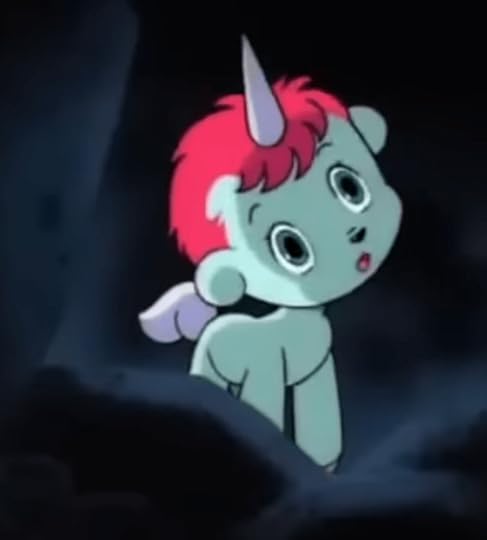 Shit. He has a taste for blood now.
Shit. He has a taste for blood now.In the smashed remains of the statue Unico finds a tiny blue devil named Beezle, who is understandably upset that his Dad has just been murdered in his own home. Unico wants to know if Beezle will be his friend because this little psychopath just cannot read the room but Beezle agrees once he has the concept explained to him and realises that friendship means being allowed to borrow other people’s stuff and yes, I definitely have had friendships like that.
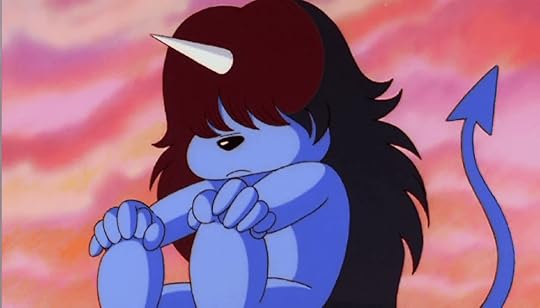 Fun fact. In the manga his Dad is Lucifer which makes this cute little guy the literal anti-Christ.
Fun fact. In the manga his Dad is Lucifer which makes this cute little guy the literal anti-Christ.This is as good a point as any to talk about the animation and also, I guess, a good time for me to make my terrible confession.
Ahem.
I don’t really rate Tezuka as an animator.
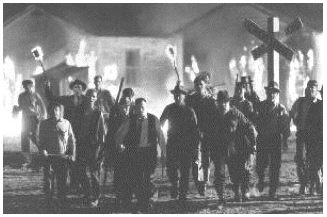
Obviously I respect the hell out of his impact on the medium and his prodigious output. But just on the base level of making lines on a page move? No…I don’t really dig it. I think his character designs are overly cutesy and the actual animation tends to be quite simple and sluggish. Look, Walt Disney wasn’t exactly a Rembrandt with a brush himself, there are other ways to be a great animator than animating. The animation in Unico is probably the best animation I’ve seen by Tezuka, but I always find it interesting when it’s clear that animators have a favourite character and here it’s obvious that Beezle is Daddy’s special little guy. He’s over here getting 24 glorious frames a second while the other characters are getting the Poochie treaatment.
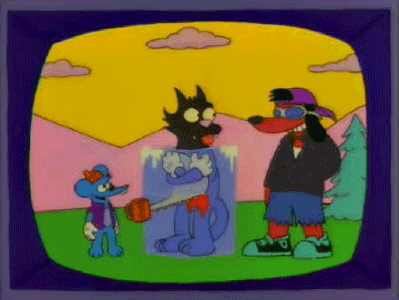
Anyway, Beezle agrees to be Unico’s friend as long as Unico gives him his horn (this movie has a large queer fanbase? Get out of here, that can’t be right). Unico reluctantly agrees to let Beezle have his horn but only for a day and pretty much instantly regrets it.
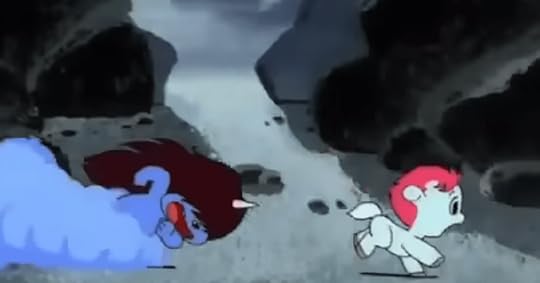
Unico falls into the sea and starts to drown and begs Beezle to save him but Beezle says that he doesn’t do stuff like that because he’s a devil and is ontologically evil.
So he leaves Unico to drown and goes back to his cave. But then he realises that if Unico drowns he won’t be able to give him back his horn, thus breaking his word. Because he’s not going to renege on a contract, he may be pure evil but he’s not that pure evil. Anyway, he runs back to the ocean where Unico has been slowly drowning for hours and sees that he’s floated way out into the see and exclaims “suffering Satan!”
So I gotta wonder, this movie was broadcast in heavy rotation in America during the eighties. Did this film get caught up the Satanic panic? I kinda feel like it would have been a prime target. Anyway, he saves Unico and, in gratitude for finally doing the right thing* Unico, grants him a horn of his own. Beezle is overjoyed and starts bouncing all around the island which makes it green and sunny. The gods notice and realise that the West Wind didn’t take Unico as far away as they wanted and decide to call in another wind, the Night Wind.
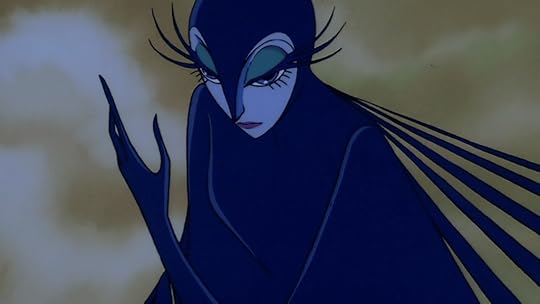 What’s interesting is that whether you think she looks angry or bored depends on whether or not you realise those are her eyelids and not her forehead.
What’s interesting is that whether you think she looks angry or bored depends on whether or not you realise those are her eyelids and not her forehead.Any, the West Wind shows up and tells Unico that the Night Wind is on her way and they gotta am-scray. She spirits Unico away without even giving him a chance to say goodbye to Beezle. She takes him to an idyllic forest land which probably should have been her first choice as opposed to the barren, demon-infested rock she left him on last time.
As you’ve probably guessed, this takes as to the adaptation of the next manga storyline. Unico meets Katy, a little black and white kitten who’s floating down a river in a basket after being abandoned. Katy is obviously deeply traumatised by this but, fortunately, she has a plan: REVENGE.
Katy wants to be turned into a human girl so that she can become a witch and uses her dark occult powers to wreck havoc on all who displease her (seriously, how did this not get every eighties televangelist frothing at the gills?). She explains this in a song sequence full of abstract imagery, non-standard animation and an utterly baffling Hello Kitty cameo.
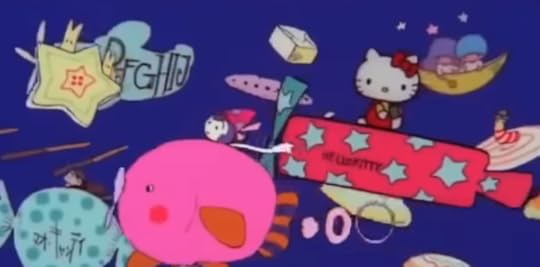
Unico and Katy stumble across an old lady’s cabin in the woods, and the old dear takes them in. But, Katy thinks that she is a witch who’ll turn her into a human, while Unico tries to explain that she’s just an old lady and doesn’t have any magical powers beyond the ones that all old women have.
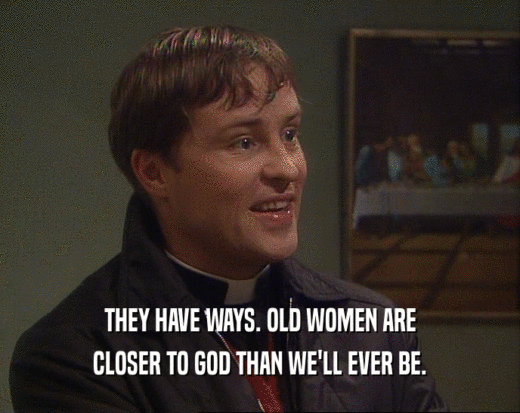
Unico takes pity on Katy and uses his own power to turn her into a young woman. Katy continues living at the cottage and helping the old woman with her chores, but she quickly gets bored of that and starts skiving off. Unico chastises her for leaving the old woman to do all the work on her own and confesses that he was the one who transformed her. To prove it, he turns her back into a cat and when she begs to be human again he tells her that he can’t because his magic only works on people he likes and he doesn’t like her anymore.
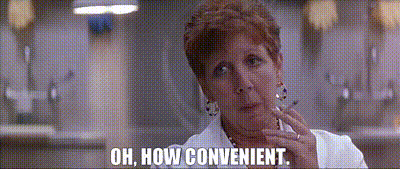
Unico was able to use his magic on the literal son of Satan who tried to stab him and left him to drown for hours. I think Unico’s power works just fine. I think Unico knows he’s got her hooked on humanity, and now he’s reeling her in.
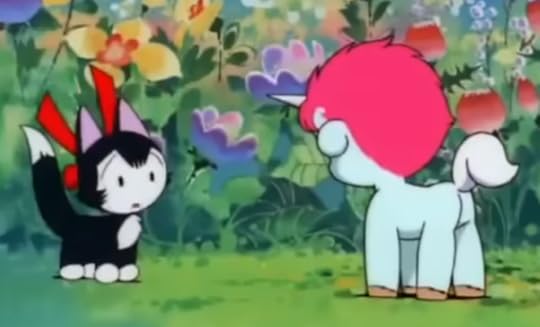 “First taste’s free. After that, you gotta pay.”
“First taste’s free. After that, you gotta pay.”But, after Katy helps save the old woman from drowning he turns her back into a human.
One day, while singing by the river, Katy is accosted by the Baron de Ghost, a dark mysterious stranger with red eyes riding a jet black steed.
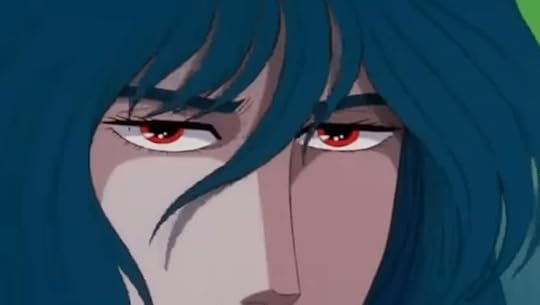 “I’m evil. But you can totally fix me.”
“I’m evil. But you can totally fix me.”He invites her to his castle in the middle of the deep dark wood, plies her wine until she passes out and then carries her to bed, telling her to enjoy her dreams as they’ll be her last.
 “Holy shit!”
“Holy shit!”But Unico follows her to the castle and, seeing that De Ghost is planning De Sexual Assault, he distracts him and then runs to Katy’s room and wakes her up. He then uses his horn to dig his way out of the castle. But De Ghost tracks them down in the forest and he and Unico have a swordfight which is surprisingly epic.
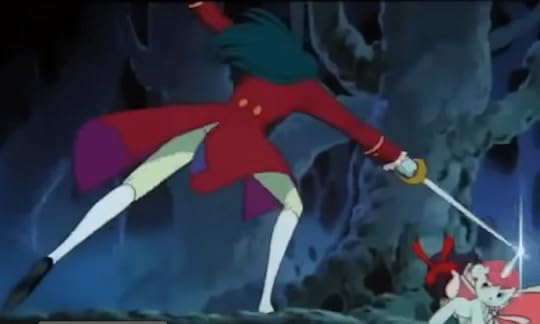
Unico breaks De Ghost’s sword but De Ghost blasts him with a green light of pure evil (which, at the time of writing, is a legal move according to the Fédération Internationale d’Escrime). Unico is knocked unconscious and De Ghost vanishes into the sky with Katy, cackling evilly (redundant really, who ever cackled wholesomely?)
The West Wind finds Beezle and tells him that Unico needs his help and they fly off to rescue him. They’re intercepted by the Night Wind but once they reach the forest the daylight forces the Night Wind to retreat. See, this is why the gods should have sent the Ol’ North Wind. That dude could get shit done.
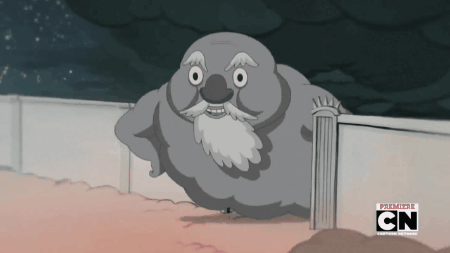
Beezle wakes Unico up and they race to the castle to save Katy. De Ghost has her tied to a lightning rod at the top of his castle for reasons that are so insultingly obvious that I won’t bother explaining them here.
Unico, obviously, tries to reason with De Ghost and show him the magic of friendship…nah, I’m kidding, he stabs that fool and he falls to his apparent death, becoming impaled on one of his own towers.
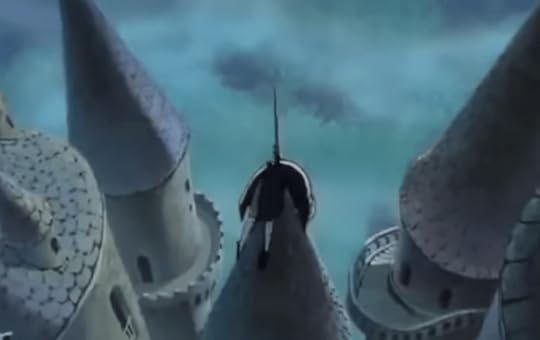
The castle starts to collapse around them and Unico, Katy and Beezle race for the exit. But then De Ghost suddenly comes back to life and turns into what I can only call “Kaijiu Satan”.
 “MAGIC WAND! MAKE MY MONSTER GROW!”
“MAGIC WAND! MAKE MY MONSTER GROW!”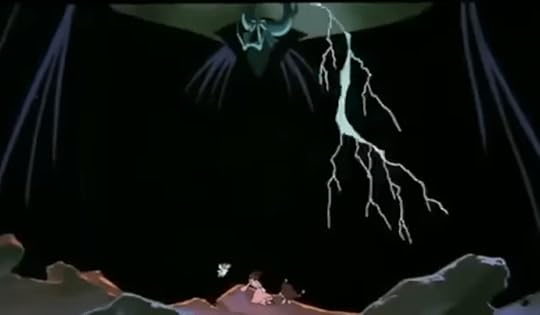
So, we are in full on Book of Revelations Mode here. A tsunami of magma flows through the forest, trees turn into dragons, red bats scour the land.
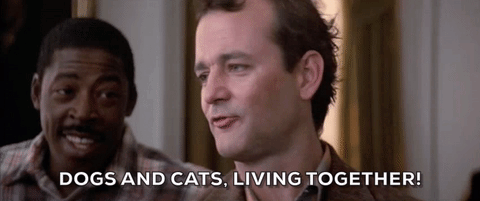
Unico decides that he’s going to fucking murder this asshole however many times it takes, grows some wings and flies up to battle De Ghost, only to get his horn cut off by his axe.
He lies dying on the ground, but Katy cries over him and, as we all know from Pokémon the movie, animé tears are the most powerful force in the universe. Beezle also gives Unico the horn that he gave him and before their eyes Unico transforms into a beautiful white Alicorn, which he can do now that they’ve proven that they love him.
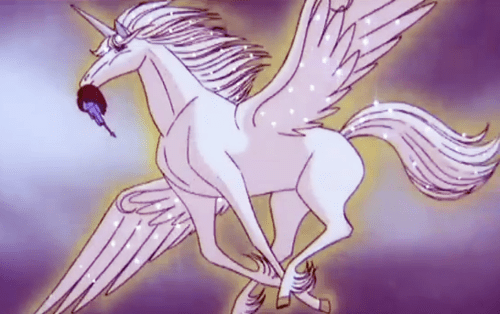 “I need to be validated before I save the world.”
“I need to be validated before I save the world.”Unico cuts through De Ghost like a hot knife through butter and everyone’s happy.
But, the West Wind comes again and whisks Unico off to another land before the Night Wind finds him.
Beezle is devastated to lose his friend again, but I’m sure they’ll be reunited in the sequel. Tezuka wouldn’t be that cruel, would he?
 Oh. I guess he would.
Oh. I guess he would.***
It’s weird to feel nostalgia for something you never grew up with but Unico is absolutely steeped in that very particular eighties animé vibe that I can’t help but love. It’s a weird ass little movie, but damn if it doesn’t feel like home.
Animation: 14/20
As I said, I’m not the biggest fan of Tezuka as an animator but there are some striking visuals here.
Lead: 10/20
I have a soft spot for characters that are sweet as sugar while still being able to absolutely wreck shop.
Villain: 13/20
I feel like this guy is responsible for like half of my generation’s fetishes.
Supporting Characters: 12/20
And here’s Katy with the other half.
Music: 03/20
The songs sound like the Japanese lyrics were thrown into Google Translate and then set to music.
FINAL SCORE: 52%
NEXT UPDATE: 27 November 2025
NEXT TIME: This is it. My final reader request.
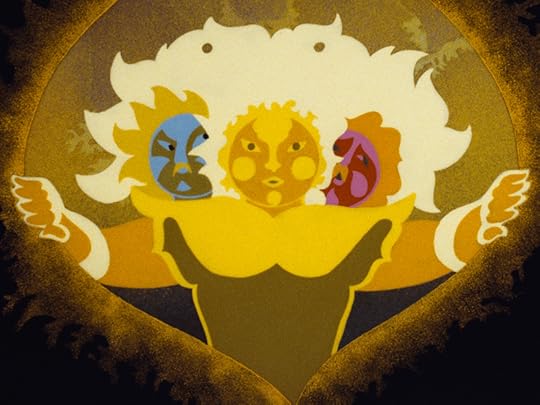 Yeah, you LOOK like a final boss.
Yeah, you LOOK like a final boss.
October 31, 2025
Bats versus Bolts: The 2020s
Funny how these things work out. I was pretty sure I had run out of candidates for this particular feature and then look what happens! A Dracula* AND a Frankenstein movie arrive within a year of each other. Both critically acclaimed, big budget adaptations directed by genuine auteur directors. Bats versus Bolts is back from the dead like a…what’s a good analogy. A mummy? Sure, that works.
So join me in what promises to be a real knock-down drag out fight. Robert Eggers 2024 Nosferatu versus Guillermo Del Toro’s Frankenstein. FIGHT! (Oh, and spoilers past this point).
The Adaptations
Not exactly a fair comparison here. del Toro is doing an adaptation of Mary Shelley’s novel which is, in broad strokes, fairly close to the original next. Certainly one of the more faithful adaptations we’ve covered here. Eggers, by contrast, isn’t in conversation with Stoker at all, except inasmuch as he’s in conversation with Murnau who was in conversation with Stoker. So, playing a 127 year old game of Chinese whispers with Stoker.
As a remake of the nineteen twenties original, Nosferatu 2024 is exceedingly faithful, following the story almost beat for beat. Of course, now we have exciting new innovations like “dialogue” which allows new wrinkles and themes to be woven into the structure of the original. The big addition that Eggers makes is SEX, returning the eroticism of Stoker’s story and ramping it up way past anything that Murnau could have gotten away with even in Weimar-era Germany, by far the sexiest of all Germanies.
To be honest, purely as stories, neither movie is entirely satisfying to me. Nosferatu is a little too simple, and Frankenstein makes adaptational changes that ultimately make the story feels less satisfying to me for reasons I’ll get into below.
Okay, well, which one is better as horror? Which movie has better atmosphere?
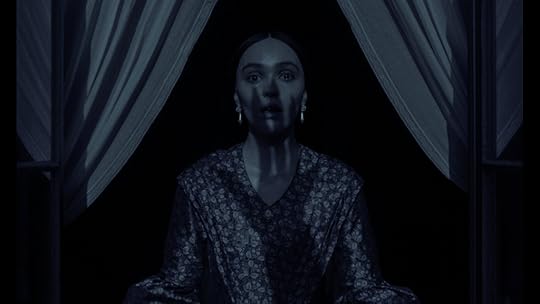
Nosferatu. Not even close.
WINNER: BATS
The Monsters
Let’s get the good out of the way first, and trust me there is a LOT of it.
For starters this is, bar none, the most visually faithful depiction of Mary Shelly’s (admittedly scant) physical description of the monster. Big, scarred, golden eyed, beautiful, and not a bolt or flat top in sight.
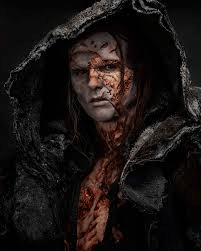
Secondly, Jacob Elordi’s performance is now right up there with Karloff’s for me. He is stunning. His physicality is phenomenal and he brings a beautiful wounded innocence to the creature. His scene with the blind old man (David Bradley) moved me in a way that the same scene in other versions has never done. If ever there was a movie that was carried close to greatness by a single performance, it’s this one. I love this monster, and it’s clear that Guillermo del Toro does too. But unfortunately…I think that kinda ends up hurting the film. Here’s why.
Now, it’s not unusual for a version of Frankenstein to be sympathetic to the monster. Hell, I can’t think of a single version I’ve seen where the monster is not depicted as someone more sinned against than sinning, right back to the original novel. And sure, if anyone is going to make a movie where your root for the monster it’s going to be Del Toro. But I have never seen a version that so absolutely refuses to engage with the uglier parts of Shelley’s character. Literally every evil thing the monster does in the novel is either given to Frankenstein (like killing Elizabeth), recontextualised so he’s acting in clear self-defence or omitted entirely. No little girls dying in this one, I can tell you that much. Hell, even the monster trying to convince Frankenstein to make him a companion is dropped almost as soon as it’s mooted. I half expected the monster to say “wait, creating a female to be my mate would violate her agency and rights, how could I even think of doing such a thing?”
The point of the character in the book is he did evil because the world treated him with evil. But…he did do evil. He killed innocent women and children. And by removing pretty much any negative actions or qualities from the monster, the story becomes flatter, less challenging and less rich to grapple with. It just becomes the story of a poor perfect boy whose Dad was a colossal asshole.
As well as being beautiful and noble and good and innocent and just the cutest little woobie, this monster is by far the most powerful version ever depicted oncreen outside of that one movie where he fought a knock-off Godzilla.
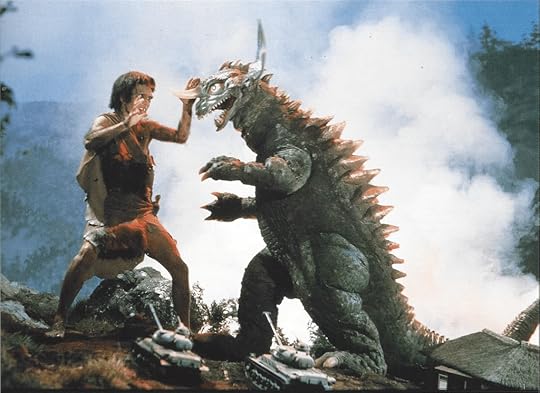
This monster can push an entire ocean vessel and has a healing factor that Wolverine would be proud of. And frankly, if it wasn’t for Elordi’s insanely rich and charismatic performance holding it all together, it would start feeling more than a little fan-ficcy.
Nosferatu, by contrast, goes running right in the other direction.
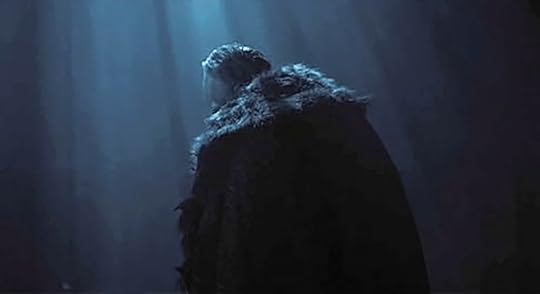
Bill Skarsgard’s Count Orlock is, in his own words, “an appetite”. Pure, carnal hunger. Not a trace of charm or camp here. More nakedly sexual than any other screen Dracula (this one hangs dong) he is also paradoxically the least sexy. He is a wheezing, emaciated rotting corpse. With a moustache.

Like most Dracula adaptations (hell, let’s be honest, like the original book) the strongest section of the movie by far is following the young lawyer on his journey to Dracula’s castle and feeling the menace tighten around your throat like a vice. The more we actually see of Orlock, the less interesting he becomes. Which is not to say that Skarsgard is bad, at all, or that this is not a valid take. But Elordi is doing something generational here.
WINNER: BOLTS
The Scientists
As a result of Del Toro putting his thumb so firmly on the scale, just as we got probably the purest monster, we must also have possibly the single most loathsome version of Victor Frankenstein ever seen in a major film.
Note that I don’t say “the most evil”, because Peter Cushing’s Doctor was a full-on super villain (and we loved him for it). What I mean is that you are not meant to look on Oscar Isaac’s Frankenstein as anything other than the most contemptible louse of a man. Everything from the makeup to the way he’s shot goes out of its way to make Isaac (a very beautiful man) look like some kind of gremlin.
Every cruelty and flaw of the original character is turned up. Instead of examining dead bodies, we see him assessing living prisoners waiting their turn on the gallows like he’s at a butcher shop picking out the best cuts. His presentation of his work to the university of Ingolstadt is very deliberately presented as a 19th century AI tech demo. Y’know, just in case you needed another reason to hate him.
In the original novel, Frankenstein creates the creature, freaks out when he actually does and flees the lab, returning the next day only to find the monster has gone. Which, granted, doesn’t paint him in the best light. Del Toro’s Frankenstein however, is at first overjoyed at his success. But, after trying to care for the monster (in scenes that are very deliberately coded as looking after a severely developmentally challenged child) he becomes increasingly over-tired and frustrated and starts viciously abusing the monster. Then, because Elizabeth prefers the monster to him, he frames him for the murder of her father (oh yeah, he killed Elizabeth’s father we’ll get to that), and traps the monster in the lab AND sets fire to it. By the end you’re thinking “okay Guillermo, we get it. He SUCKS.”
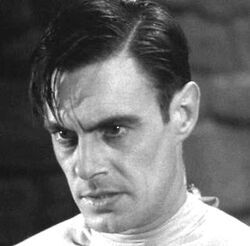 “Stop dripping water on the floor!”
“Stop dripping water on the floor!”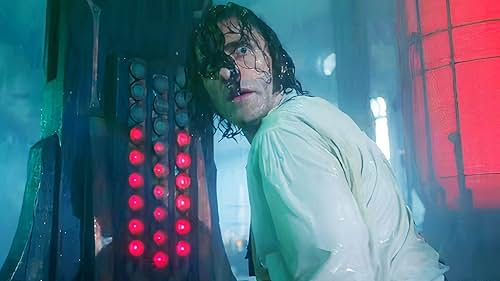 “It’s not water, I just sweat constantly!”
“It’s not water, I just sweat constantly!”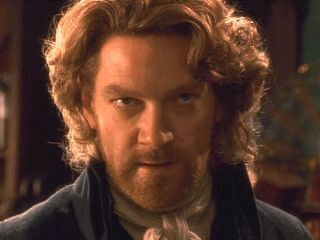 “Ha! Look everyone! I’m not the worst one anymore!”
“Ha! Look everyone! I’m not the worst one anymore!”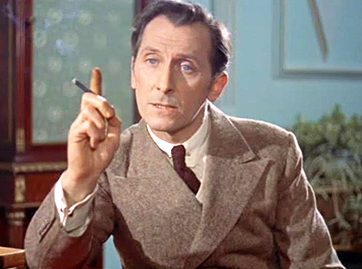 “I would scarce credit it and yet, he is wholly without merit.”
“I would scarce credit it and yet, he is wholly without merit.” “WAAAAH! DADDY WAS MEAN TO ME AND GIRLS DON’T LIKE ME!”
“WAAAAH! DADDY WAS MEAN TO ME AND GIRLS DON’T LIKE ME!”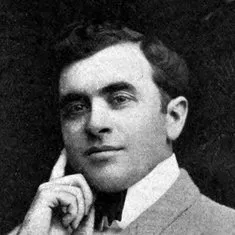 “Oh my God SHUT UP!”
“Oh my God SHUT UP!”You know what I just realised? Abraham Van Helsing is one of the most colourful and distinctive character in the original novel and yet we almost never get a book-faithful depiction. Hilariously, I think the actor that came closest is probably Mel Brooks! Well, despite the fact that he is playing a character named Albin Eberhart Von Franz, Willem DaFoe is probably a strong contender for most faithful depiction of Abraham Van Helsing. Brilliant, eccentric, kind, noble and ever so slightly mad.
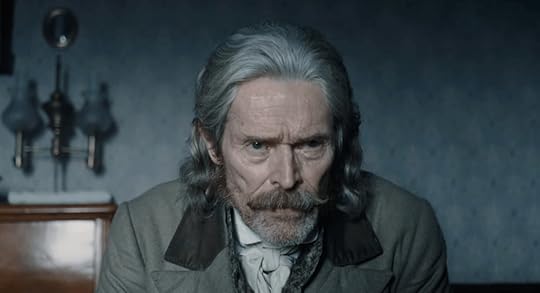
Perfect. No notes.
WINNER: BATS
The Dashing Young Men
Frankenstein introduces a new character, Henrich Harlander played by Christof Waltz, a munitions magnate who’s become fabulously wealthy due to the Crimean War and bankrolls Victor’s experiments. This is a great addition, as it gives us an explanation as to how Victor Frankenstein, med school dropout, is able to afford a fucking DOOM FORTRESS.
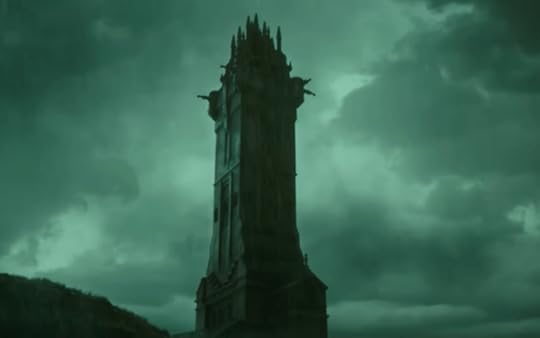 Which I LOVE, by the way.
Which I LOVE, by the way.Going back to the Tech Bro motif, Harlander is the billionaire financing Frankenstein so that he’ll build him a new body because he’s dying of the dreaded pox, the Spanish disease, Aphrodite’s curse, la lues…
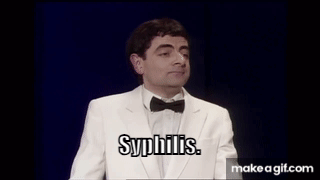
But Frankenstein didn’t create a beautiful big man just to give him a syphilitic brain and ends up accidentally killing Harlander in a struggle and later blaming the monster for his death. Reminder, he is absolute scum.
The only other major male character of note is Victor’s younger brother William played by Felix Kammerer who gets injured in a melee when the monster shows up at his wedding and dies in his brother’s arms after telling him “you’re the monster”.
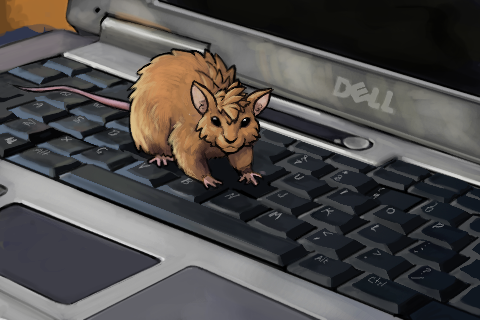 “Oh HE’S the monster! I thought the monster was the monster but apparently HE’S the monster. Ohhhhhh…”
“Oh HE’S the monster! I thought the monster was the monster but apparently HE’S the monster. Ohhhhhh…”Over in Nosferatu land, Nicholas Hoult as Hutter gives a great performance but let’s be honest, when does that dude not deliver? Aaron Taylor Johnson gives a great performance as Hutter’s wealthy friend Harding who collapses into madness from the sheer horror of Nosferatu’s assault on his family. And then there’s Ralph Ineson (who is bloody stalking me as he also appeared in Fantastic Four AND Frankenstein 2025) who plays the Seward-analogue Doctor Sievers with a deep voiced gravitas that you can feel in your jellies.
WINNER: BATS
The Perpetually Imperilled Ladies
Foofur was an animated series created by Hanna-Barbera between 1986 and 1987 following the adventures of a blue bloodhound and his canine friends.
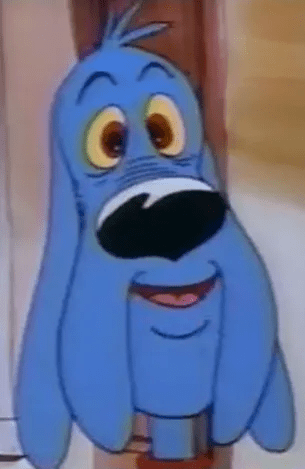
It was blandly terrible, and is almost totally forgotten except by weird animation obsessives like me.
Which is why I am at a loss as to why the costume department decided to homage the series with Mia Goth’s outfit in Frankenstein.
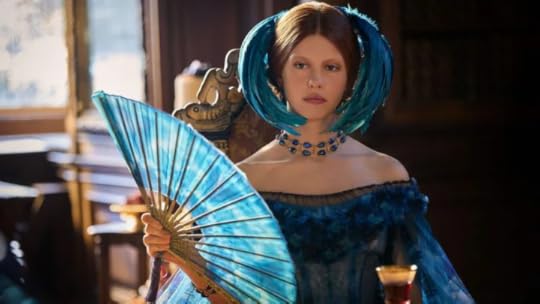
Sorry, I will get to the character in a second but my God the costumes they saddle this woman with. It was taking me every ounce of strength as a queer man to not stand up in the middle of the cinema and yell “oh honey NO!”
Anyway, this is certainly a unique take on Elizabeth in that she never actually has a romantic relationship with Victor at any point and, in fact, for a majority of the run time actively loathes him. She is instead the fiancee of his younger brother William. When she meets Victor first they develop something of a friendship over a shared love of etymology, but when he makes a pass at her (because the dude is scum) she shuts him down and their relationship is never anything close to amicable again. You might think this makes her a more empowered character but…it really doesn’t. Firstly, she’s written in a way that makes it impossible to see her as anything more than del Toro’s self insert, giving long declamatory speeches on the themes of the film and Frankenstein’s flaws as a person (same thing really). And, she is still utterly defined by her relationship to Frankenstein, it’s just now that relationship is antagonistic. Oh, and she’s totally in love with the monster because, as I said, del Toro self-insert.
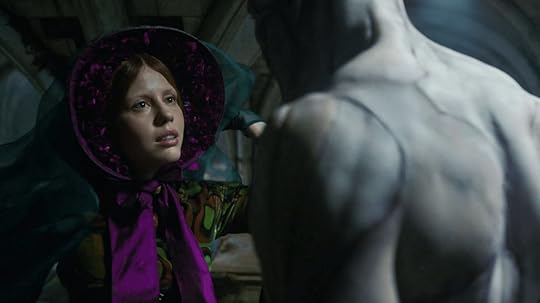
Sorry, I feel like this review is coming across a lot more negative to Frankenstein than I intended. I guess it’s just that the things I tend to talk about most in these reviews (differences from the source material, characters) are the areas where I have the most issues with. It’s a sumptously beautiful film, a worthy addition to the canon, certainly a fascinating take and well worth your time. But it’s got flaws.
Rating Liy Rose Depp’s performance as Ellen Hutter is one of the hardest things to talk about because it is often quite bad when it is not being one of the single greatest pieces of acting I’ve ever scene. This is an actress who can’t make me believe she is walking on a beach having a conversation with her friend but can make me believe with every fibre of my being that she is possessed by the Devil and would quite like to be fucked until the bed breaks.
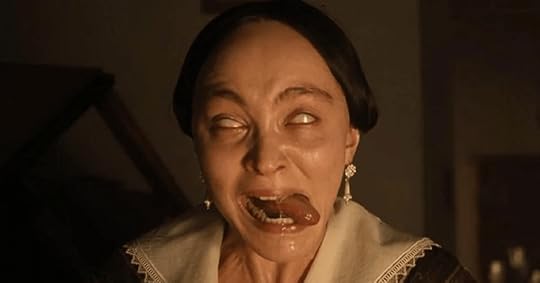
It is an enthralling, terrifying, utterly mesmerising piece of physical acting the likes of which only comes along once in a blue moon. And Depp is such an eerily beautiful, other-worldly presence in front of Egger’s camera that it really does not matter a tinker’s curse if some of her dialogue scenes feel flat or fake. No one else could do this.
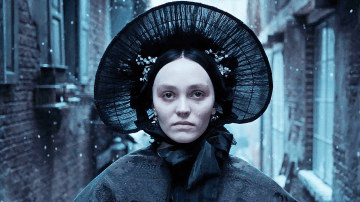
If I have an issue with this character it’s that it feels like the movie is going for a feminist re-telling of the original story (they mention corsets, that was my first clue). But…here’s the thing. In the original novel Mina defeats Dracula. She does it as part of a team, working with men who love and respect her, but she is an active agent in her own deliverance from Dracula, overcoming him with her own intelligence, fortitude and bravery.
Ellen Hutter 2025 defeats Orlock by letting him come and fuck her and feed on her until the sun comes up and they both die.
I kinda feel like that’s a step backwards.
WINNER: BATS
Are either of these movies actually, y’know, scary?
I find Nosferatu genuinely unsettling, certainly in its first half.
Why would would I be scared of del Toro’s monster? I want to give him a Twix and tell him it’ll all be okay.
WINNER: BATS
Best Dialogue:
In the the scene where Victor is assessing the prisoners on the gallows he smells one’s breath, grimaces and says:
“You’re lucky! You would have been dead in a year!”
God, he is the worst.
For Nosferatu, I do love Harding’s brusque
“I’m a ship-man”.
when Doctor Sievers tries to give him a basic primer on Alchemy and the Occult.
WINNER: BOLTS
FINAL SCORE: Bats 5, Bolts 2
NEXT UPDATE: November 13th 2025
NEXT TIME: Sight. I have TWO more requests to do (freedom is so close now).
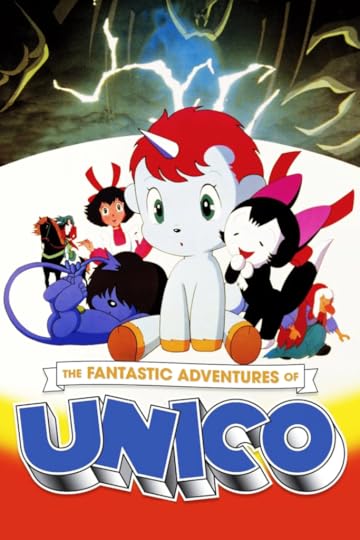
October 24, 2025
You all really don’t like fish, huh?
Okay, this is starting to get a little scary now.
In the last week, Don’t Trust Fish has been Shortlisted for the 2025 An Post Irish Book Award for Children’s Book of the Year – Junior.
Voting has now begun and if you could give me a vote I’d really appreciate it.
ALSO
Publisher’s Weekly have named it as one of their best Picture Books of 2025.
Blogger and teacher Colby Sharp also featured DON’T TRUST FISH in a list of “Amazing 2025 Books” that you can find here: https://www.mrcolbysharp.com/2025
Oh, true story. Once my grandmother made me tidy my room and when she saw the result sniffily remarked that I’d never get the Good Housekeeping Seal of Approval. Well, well, well.
Don’t Trust Fish actually, literally, has the Good Housekeeping Seal of Approval. I’m dead serious.
Barnes and Noble have named it as one of their Best Picture Books of 2025.
And lastly, Don’t Trust Fish has been shortlisted for the 2025 West Sussex Picture Books to Shout About Award.
And this is just the stuff I can tell you about NOW.
Crazy, crazy year.
October 16, 2025
“How’s that sauce coming? Yeah, I’ll be the judge of that.”
I saw a Stan Lee interview a long time ago where he was recounting the creation of Spider-Man, where halfway through he mischeviously winked at the camera and said “I’ve told this story so many times that for all I know it’s true”.
That caveat pretty much applies to any story Lee told about the birth of Marvel’s second wave of superheroes in the nineteen sixties. Even if we discount Stan’s (well earned) legendary reputation for self promotion and myth-making, he was an old man with a failing memory. But, screw it. That’s pretty much all of human history. A story we’ve told ourselves so many times, that for all we know it’s true.
There are conflicting versions of how the Fantastic Four came to be. Stan Lee said that he conceived the idea after publisher Martin Goodman asked him to come up with a superhero team to compete with DC’s then-new Justice League of America. Jack Kirby disputed this, claiming that the team was principally his idea and functioned as a continuation of his work on Challengers of the Unknown for DC. My opinion is…it really doesn’t matter. The book is credited as the co-creation of Jack Kirby and Stan Lee, and if you read it, it becomes immediately clear that it is a co-creation of Jack Kirby and Stan Lee. If you replaced either Kirby’s art or Lee’s writing, it wouldn’t be the same thing. Both men put their stamp on it, and hard. What is, I think, un-contestable is that The Fantastic Four #1 is the single most influential comic book issue since Action Comics debuted in 1938.
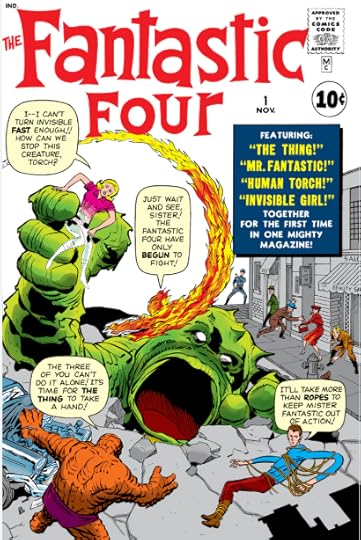
While Superman’s debut launched the comic book superhero genre, it had peaked and waned in the years after World War 2. The Fantastic Four not only re-kindled interest in the genre, it set it on the path to near total conquest of the American comic book landscape. This one book acted as a cauldron for concepts that shaped the entire industry, both in a fictional and technical sense. It was working on this book where Kirby and Lee pioneered the “Marvel Method”, where instead of a full script, the writer contributed a broad outline, leaving the artist discretion to shape individual story beats, with the writer then returning at the end of the process to craft dialogue. This was the method that allowed Stan Lee to be so insanely prolific throughout the sixties and much of the seventies. The book also introduced more psychological and narrative complexity than was typical of comic books of the era, when they were still seen as a medium for children. And, of course, I could spend all day listing the iconic characters that were introduced in the pages of this one book and how it acted as the Big Bang for the nascent Marvel comics universe. Fantastic Four was the book where Stan Lee became STAN LEE and Jack Kirby became JACK KIRBY. Although they were both seasoned industry veterans, it was here that Lee honed his trademark mix of action, medodrama and wise-acre comedy. And Kirby? Kirby underwent a transformation from a talented artist to a one-of-a-kind icon of the medium.
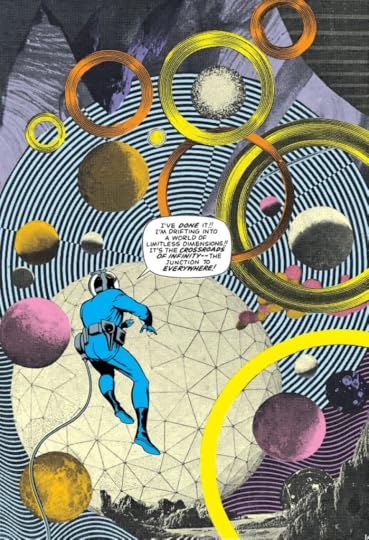
As for adaptation to other media, the Four has been well represented with numerous animated series and a radio show in the seventies starring NO FUCKING WAY THAT IS TRUE! BILL MURRAY?! BILL MURRAY PLAYED THE HUMAN TORCH!!!?!
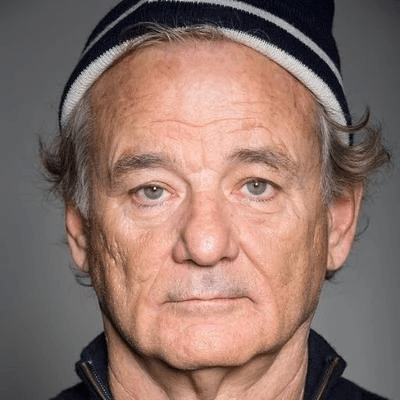 “No one will ever believe you.”
“No one will ever believe you.”But for such an important property, the jump to live action took a lot longer. This is just a difficult property to adapt. It’s one thing to stick a stuntman in a Spider-man costume and have him punch a few goons. It’s quite another to set him on fire and launch him into space to battle world-devouring space gods (the union will fucking eat you alive). So it wasn’t until the late eighties when special effects driven science fiction was having a moment that the rights were finally sold. That resulted in a movie so good that Roger Corman hid it under the floorboards to ensure it was never tainted by the eyes of a sinful world. Come the 2000s the rights were picked up by Fox and we got the Time Story duology which, while undergoing something of a positive reappraisal these days, were deeply compromised.
Then there was JESUS CHRIST WHAT EVEN IS THIS?
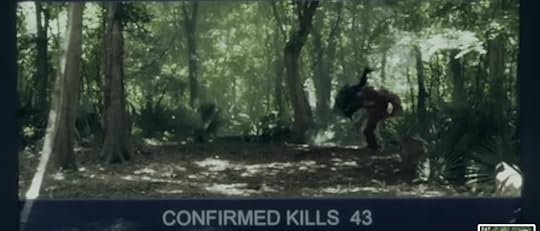
But, at last, here we are. The Fantastic Four, in the MCU, as God and Kevin Feige intended, coming back to rekindle interest in a superhero genre that had almost died due to lack of interest.
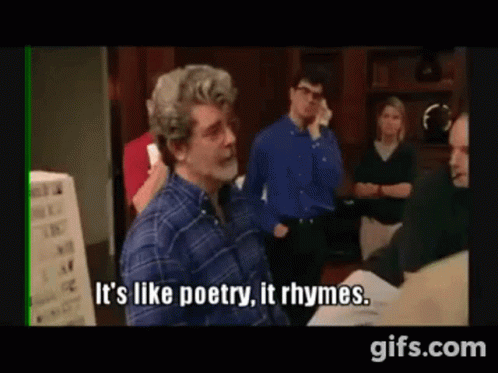
Okay, so our story takes place in 1964 on Earth 838 where the Fantastic Four are (at least as far as we know) Earth’s only superhero team. And this is a great, great choice. For starters, the Four are such a quintessential piece of sixties Americana that it just makes more sense to set the story in that era. And secondly, you just couldn’t do a story where the Four have their origin on Earth 199999 and are the newest superheroes on the block. That works for Spider-Man, who’s always been depicted as a young, in-over-his-head kind of hero, but the Fantastic Four have to be the elder statesmen of the superhero community. That’s kinda their whole deal. They are the guys the Avengers call when it’s all getting a bit much.
The story begins with Reed Richards and Sue Storm learning that, after years of trying and believing it wouldn’t happen, they’re going to have a baby. One word I could use to describe this movie is “simple”, and not in a bad way. But it’s a film with remarkably few moving parts. A family welcomes a new baby. A bad man wants the baby. The family have to protect the baby. There’s some science fiction tinsel draped over it but that’s it. And, honestly, I think that’s one of the movie’s big strengths. You don’t need to know 36 movies and 86 years worth of lore to understand any of this. It’s a nice simple story with a universal theme that stands perfectly well on its own two feet.
So after a nicely played, low-key scene where Sue and Reed celebrate their unexpected good news, we get a montage that excellently fills us in on the status quo of this new world. Four years ago, Reed Richards, his wife Sue Storm, her brother Johnny and his best friend Ben Grimm went on a mission into space and were exposed to mysterious cosmic rays. They came back, and Reed can now stretch like a politician’s ethics, Johnny can turn his body into fire and fly like…fire, Ben has turned into my usual post Christmas dinner turd and Sue can turn invisible and create forcefields. In the past four years they’ve created world peace, ushered in a technological utopia and defeated several supervillains such as the Red Ghost and the Mole Man.
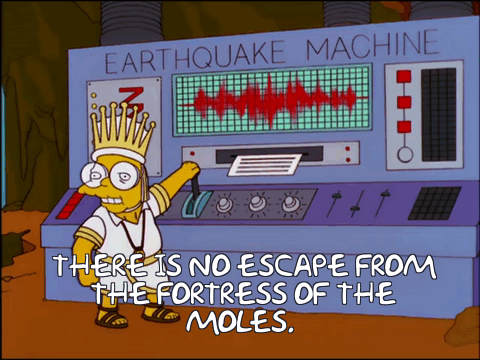
This is all great and does a much better job of conjuring an aesthetic of mid-century techno-optimism than certain other movies I could name, but I think it could have gone further. For all the lovely period touches, the dialogue and performances are still very 2020s. Not bad, but very much of their time. I would have loved to see the movie lean into the period even more. Give Reed a pipe, for God’s sake! And let’s get some authentic sixties dialogue!
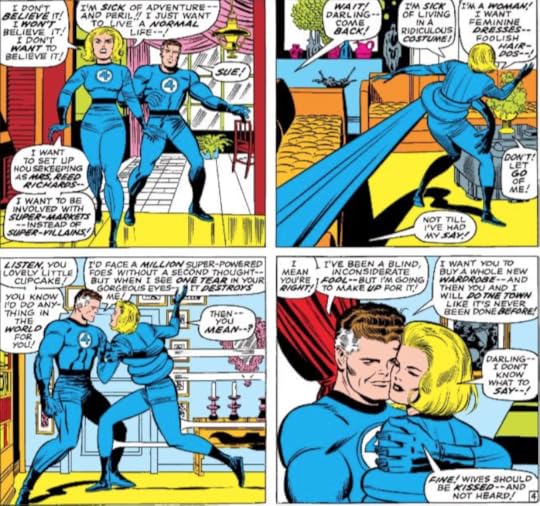 Okay, okay. Point taken.
Okay, okay. Point taken.Anyway, another advantage to having the movie set on a different Earth is that we get to avoid the “Reed Richards is Useless” trope because in this world Reed Richards is, quite frankly, killing it. But, a few months into Sue’s pregnancy, a new threat appears in the night sky: GENDER DIVERSITY!
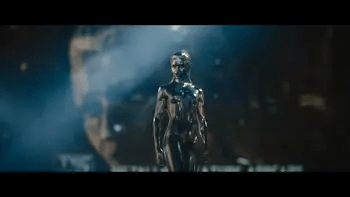 Apparently having a naked chick in your movie is woke now.
Apparently having a naked chick in your movie is woke now.The Silver Surfer warns the Earth that something called Galactus is coming to devour the Earth so they probably shouldn’t start any long books. Johnny flies after her and she says something to him in her own language before he has to return to Earth. The Four decide that they are not best pleased by the gall of this Galactus fellow, and resolve to fly a spaceship to wherever he is and punch him in the dick.
They track the Surfer’s energy signal to an alien world but can’t see Galactus.
Only for his ship to leap out of the planet like a frickin’ chestburster.
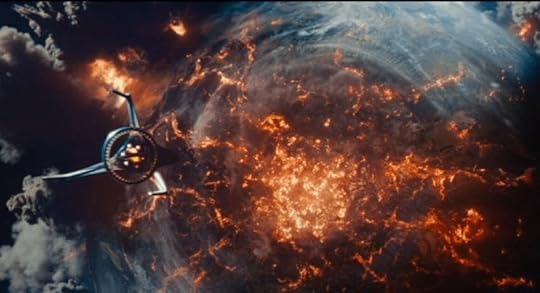
One thing you gotta have in a Fantastic Four movie. Jaw-dropping cosmic spectacle. And this movie has that in spades.
The Surfer shows up on their ship and tells them that Galactus will see them now. Johnny asks her what she said to him earlier and she says it means “Die With Yours”. The Four are ushered into the presence of Galactus and it sure is some presence.
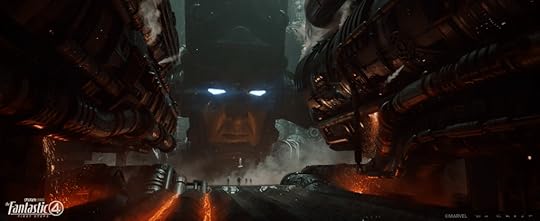
Galactus then offers them a terrible bargain. He will spare the Earth…in exchange for their child.
Galactus tells them that Franklin is actually a cosmic God masquerading as a human baby and that he can replace Galactus and free him from his eternal hunger. Reed and Sue, obviously, had different plans for their son which included more going to Harvard and less devouring planets as a force of eternal universal balance and the Four beat tracks out of there. They race back to Earth with the Surfer in hot pursuit and (of course) that’s when the baby decides to arrive, bloody typical. They manage to trap the Surfer in a neutron star and head back to Earth.
At a press conference, the Four tell the world that Galactus wants their baby but they’re not going to give him up and the world is all: “um, were you aware some of us also have babies?”
The mood becomes pretty grim both inside and outside the Baxter Building with an angry crowd gathering outside while Sue and Reed’s marriage starts to crack under the strain of the terrible choice they’re faced with. Sue takes Franklin outside to meet the crowd so that they can see that the baby they’re going to die for is at least very, very cute. Because let’s face it, no one wants to die for an ugly baby. I’m being glib, it’s a very a good scene but that’s not funny to write about.
Anyway, Sue tells the crowd they will “move heaven and Earth” and that gets Reed’s big brain firing and he comes up with a genius plan to teleport the entire planet around a star on the other side of the universe. Good plan, but I think they’re forgetting something.
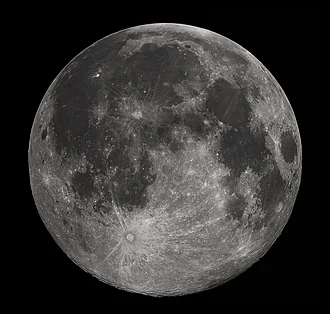 This thing is kinda important.
This thing is kinda important.This kicks off a massive world-wide effort to build teleportation gates all around the world before Galactus arrives. All of humanity working together to save the world. It’s so cheesy and I love it. Meanwhile Johnny has been working overtime to translate a message from space they received years ago which he recognises as being in the Surfer’s language.
Just as the Four are about to teleport Earth to safety, the Surfer arrives and starts smashing the gates. Johnny lures her to Times Square and bombards her with the message which is actually from her own homeworld. We learn that this surfer is not Norrin-Radd, but Shalla-Ball (his love interest in the comics), who agreed to become Galactus’ herald in exchange for sparing her homeworld. Johnny then plays her other messages of planets crying out for aid as Galactus destroys them and the Surfer decides that this is not bodacious and surfs away. Unfortunately, the Earth is not teleporting down to the shops today, let alone to the other side of the universe, so it’s time for plan B.
Reed realises that there is one gate still functioning, the one in New York. So, instead of teleporting the Earth away from Galactus, they can teleport Galactus away from the Earth. Unfortunately, this means luring him to New York with the only thing that he wants; big purple butts Franklin.
With the help of the Moleman, New York is evacuated and the Four leave Frankin in a baby carrier inside the teleportation gate. Johnny temporarily blinds Galactus so that they can swop out the baby carrier with a ringer but it turns out that you don’t get to be a four billion year old space god by being no putz and Galactus sees through the ruse and takes Franklin from the Baxter Building. But Reed is able to get the baby off Galactus just long enough for Sue to use her powers to FUCKING SHOVE GALACTUS INTO THE TELEPORTATION GATE.
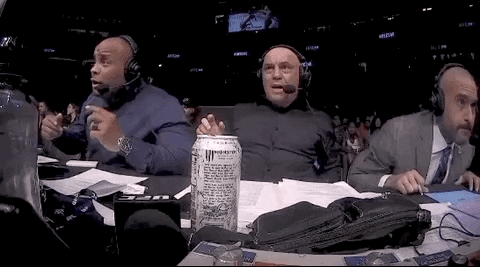
I REPEAT. SHE. SHOVED. GALACTUS.
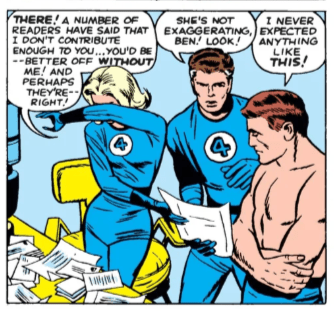 You come a long way, baby.
You come a long way, baby. You come a long ass way.
Galactus still almost pulls himself out and Johnny prepares to sacrifice himself but at the last minute the Silver Surfer appears out of nowhere and steals the kill. The Surfer and Galactus vanish and the Earth is saved but Sue is seemingly dead. Reed tries desperately to resuscitate her but to no avail. He lets Franklin say goodbye to his mother and the, lo and behold, the baby brings his mother back to life which I’m pretty sure means no grounding, ever.
***
This is a good movie, and I enjoyed it more on a second watch which is always a positive sign. It’s not exactly my idea of what the Four should be. I think Ben Grimm should be a little more ornery, and Johnny a little more douchey and Reed a little less Pedro Pascally (I don’t hate him, but I don’t get why you all seem to love him either). In fact…screw it, I’m just gonna say it…
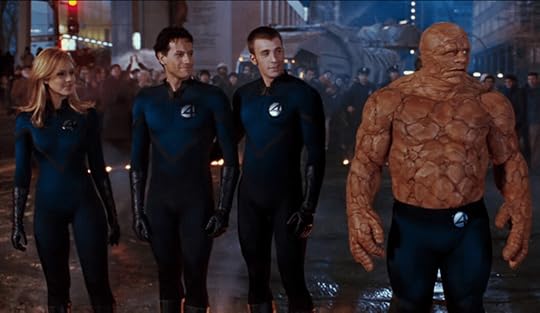 This cast, with a script that got Doom and Galactus right? THAT’s a perfect FF movie right there.
This cast, with a script that got Doom and Galactus right? THAT’s a perfect FF movie right there.Scoring
Adaptation: 19/25
Overall a good, solid adaptation of the Galactus Trilogy. Nothing ground-breaking, but given the track record of this franchise (and the currently precarious health of the MCU as a whole), playing it safe was probably wise.
Our Heroic Heroes: 20/25
The Beyond Meat version of the Fantastic Four. Tasty in its own right, but not quite the real thing.
Our Nefarious Villain: 16/25
Oh, look at that. We’re not embarassed to have a Galactus who’s a giant purple dude with a tuning fork on his head.
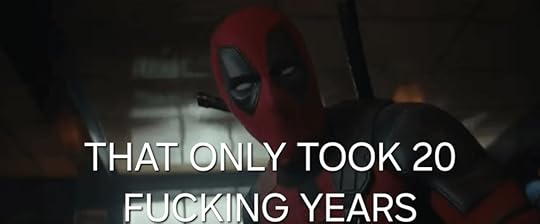
Our Plucky Sidekicks: 20/25
I always thought that Doug Jones’ and Laurence Fishbourne’s Silver Surfer was by far the best element of the Tim Story movies, so colour me impressed that Julia Garner manages to top that. Perhaps strangely, given the the gender flipped casting, she feels truer to her comic book inspiration than any other character. Granted, said gender flipping now seems less like an attempt at gender balance and more a way for them to tease a relationship between Surfer and Johnny while not losing ticket sales in the Middle East but whatever, good performance.
The First Stinger
We fast forward a few years to where Sue is reading a story to Franklin. She leaves to go to the kitchen only to come back and find Franklin with a strange man in a green robe and a metal face mask.
And the audience went…
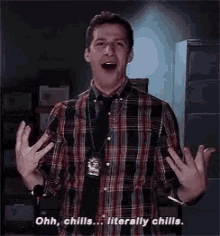
I am still deeply dubious about Downey Doom and Doomsday in general but even I felt a little hype right there.
The Second Stinger
We get to see clips of the in-universe Fantastic Four cartoon show.
And the audience went…
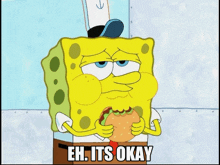
Whatever, it’s a cute bit. What’s less cute is the amount of comments I saw of people saying “OMG Marvel should totally make a cartoon series in this style, I’d watch it!”
Sigh.
I am getting too old for this shit.
Hey, was that Stan Lee?
That was Greg Haiste, playing Timely Employee #2, in a cute little cameo alongside Martin Dickinson as Kirby. God, I really wish they’d both lived to see this one.
FINAL SCORE: 75%
NEXT UPDATE: 31 October 2025
NEXT TIME: I worry I am overpromising here as I am only going to get to watch one of these films a mere few days before the review is due to go up but…dammit I’m going to try. Bats versus Bolts returns…
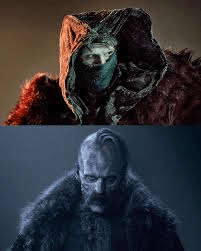
October 8, 2025
Feelin’ good
So, today’s been a bit of a day.
First of all, the long awaited audiobook for Knock Knock Open Wide is available in North America from Tantor media, narrated by the wonderful Aoife McMahon!
Second! The Burial Tide was just nominated as one of the New York Public Library’s Top 20 Horror Books of 2025 in some pretty darn august company!
And lastly, Indigo Books of Canada has named Don’t Trust Fish! as their Number 1 best Kids Book of the Year!
Yes, all my children seem to be doing so well, except of course for one.
 “Been looking for a job? Maybe planning on moving out of the basement?”
“Been looking for a job? Maybe planning on moving out of the basement?” “Ugh, get off my case DAD.”
“Ugh, get off my case DAD.”
October 2, 2025
The Good Dinosaur (2015)
Maybe it’s me. Maybe I just shouldn’t be allowed near CGI animated dinosaur films. I don’t know why this particular mircogenre of movies manages to so consistently stick in my damn craw. I, of course, have Dinosaur sitting proudly at the very bottom of my rankings of the Disney canon and I have every hope that it will remain that way for a long time.
And I would still gladly watch Dinosaur over The Good Dinosaur. Mainly because, I can at least watch Dinosaur from beginning to end. The Good Dinosaur is the second last movie on my requested reviews because I have put it off over and over and over again. I cannot finish this thing. It bores the piss out of me.
But, before we crack on, I want to explain why I’m not doing a full plot recap for this one.
I was feeling ever so poorly.I actually had a lot on this month. Um…I don’t know if you heard but some stuff happened.
 Still not entirely sure this isn’t my wife pulling off an amazingly ambitious prank.
Still not entirely sure this isn’t my wife pulling off an amazingly ambitious prank.3. This movie has practically no plot to recap.
4. Disney Plus was dicking me around something fierce, constantly crashing and freezing and making the experience of watching this movie even more interminable than normal. This, by the way, was also during Kimmelnacht so you can understand why I was eyeing my Disney Plus subscription with a steely eye and whispering…

So, not a recap, more a series of observations about why this fucking movie annoys me so much.
Or, y’know, a rant.
The Good Dinosaur is set in a world where the asteroid that caused the K-T extinction* missed and the dinosaurs continued living right to the present day. Oh, but humans also managed to evolve anyway. Presumably through magic.
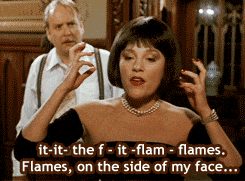
Fine, fine, it’s a cartoon. If the movie wasn’t good I probably wouldn’t mind. Still though. Really dumb.
Anyway, Henry and Ida are two Apatosaurus farmers raising their three kids, Libby, Buck and Arlo. Arlo is our protagonist and the titular good dinosaur. Or so the movie says, lying tramp that it is. But before we get into the face that the movie should be called The Dinosaur Who Fucking Sucks, Actually let me touch on a bigger issue I have with the movie. The character designs. And I realise this will make me seem like an Unpleasable Ulmer because my criticism is the exact opposite of the one I made of the designs in Dinosaur.

That movie, if you’ll remember, was originally intended as being a rather grim and bloody nature documentary style movie before it was re-tooled into a kid’s film with talking dinosaurs. Problem was, it kept the original hyper-realistic designs and it didn’t work. Same way the CGI Lion King movies didn’t work. These super serious designs don’t match the wacky cartoon personalities of the characters.
The Good Dinosaur doesn’t have a problem with overly realistic character models. Oh no.
 Put Fred Flintstone on this guy’s back and I wouldn’t blink an eye.
Put Fred Flintstone on this guy’s back and I wouldn’t blink an eye.Now, I won’t lie. I fucking hate this. BUT. It’s not objectively bad. I may loathe this weird piss green rubber looking thing but ultimately that’s a matter of taste. What isn’t a matter of taste is the fact that they took this and then put it in an ultra-realistic environment.

There is absolutely zero stylisation in the backgrounds, to the point where you wonder why they didn’t just shoot them on location and animate the characters in. And the problem with that is that when you have Arlo falling into a river and being swept away, it looks like a gas station’s inflatable dinosaur mascot came loose from its tethers. There is just no way you can reconcile characters that goofy looking existing in this world.
But that’s all aesthetics. What about the actual story? Well, as I said Arlo is our main character and that’s a big problem because Arlo, at least in the first act of the movie, has two main character traits.
He is afraid of literally everything.He wants to crush a toddler’s head.
Now, the Loveable Coward is a trope for a reason but for it to work, the coward has to have some other positive trait. Cowardice on its own is not endearing to an audience. And sure, you can make a character who’s fearful sympathetic but that usually requires explaining exactly why this character is afraid. Arlo just hatches out of his egg and is afraid of literally everything. And after the seventh time watching this character fail to assert himself with a chicken and going “waaaaaaaah” like a sauropoden Hank Hill…it gets old, is what I’m saying. Oh yes, and then there’s the toddler murder.
So Arlo’s father Henry wants him to “make his mark” by doing something, anything, useful for the family farm at which point he’ll be allowed to leave his footprint on the family barn. He gives Arlo the job of trapping whatever animal has been raiding their supply of winter food, which turns out to be a small caveboy who we’ll name Spot because that’s what he gets named later.
Arlo ends up letting the caveboy escape from the trap and Henry angrily insists that they follow it into the forest. Whereupon, there’s a flash-flood, Henry goes to join the great circle of life and now Arlo’s family are facing winter without Henry’s help to run the farm. When the caveboy comes back for more food, Arlo blames the kid for Henry’s death and his goal, for a significant portion of the movie, is to kill this child. So, he’s trying to do something awful, but he is also utterly incompetent and unable to achieve his goal. You see why I find this character a less than compelling protagonist?
Alright, Arlo chases Spot into the forest, they both fall in a river, they get swept downstream and…that’s it, that’s all the recap you’re getting because you bloody know what happens next. You know Arlo will overcome his fear and grow closer with Spot and they’ll work together and overcome their obstacles together and blah blah blah. You could probably predict every story beat from this point to the credits. Okay, fine, you probably couldn’t predict the scene where they eat rotting fruit and proceed to trip absolute balls.
 Jesus Christ those cheeks will haunt me.
Jesus Christ those cheeks will haunt me.I will admit there are a few interesting ideas here and there. For example, the family of T-Rex ranchers who’re driving their herd of buffalo across the plains. T-Rex cowboys, that’s a fantastic concept. Jesus, just make the movie about them!
 Also, their little arms make them run like they’re holding the reigns of a horse and that makes me smile.
Also, their little arms make them run like they’re holding the reigns of a horse and that makes me smile.But it’s also very clear that there’s just…no shape here. I get the distinct whiff of several drafts of a script being sewn together. There’s a sequence where Arlo and Spot meet a weird Pterodactyl cult that tries to eat them.

And another where they meet some Velociraptor rednecks who try to eat them…

And I would bet serious money that these were at one point the same scene with the same characters that got repeated to pad out the runtime.
So, to sum up. It’s boring, it’s ugly, the lead is insufferable, it has maybe two original ideas in its head and in order to watch it I had to become marginally complicit in the slow death of American democracy.
 Perhaps I treated you too harshly.
Perhaps I treated you too harshly.Animation: 07/20
Technically good, but the stylistic mismatch between the super cartoony character designs and the ultra realistic backgrounds is like carsickness for the eyes.
Leads: 02/20
I kept praying for another asteroid to do the job right this time.
Villain: 05/20
I haven’t really mentioned Thunderclap, the Canadian, storm worshipping Pterodactyl who is honestly not as interesting as that makes him sound. In fairness there might be the potential for a good villain in here. But the scene where he suddenly eats a racoon alive is less “oooh, what a scary villain” and more “no, that’s not just responsible to put in a kid’s movie, what the fuck is wrong with you?”
Supporting Characters: 07/20
Sam Elliot plays a t-rex who has a monologue about drowning an alligator in his own blood. All seven points earned there.
Music: 05/20
Yeah, I even hate the score! Goddamn I’m salty today.
FINAL SCORE: 26%
NEXT UPDATE: 16 October 2025
NEXT TIME: Obviously, it’s not going to top Roger Corman’s masterpiece, but let’s give it a fair chance.

*Yes, I know we’re supposed to call it the “K-Pg” event now. Whatever, I still call ’em “Twitter”, “Turkey”, “Puff Daddy”, “Kanye” and “UFOs” now get off my damn lawn.
September 19, 2025
Shortstember: The Citadel
Season 2- Episode 35
Wha’ happen
I discussed back in my King of Thieves review how Genie presents a huge problem in the Aladdin franchise: too popular to get rid of, but so powerful that he constantly has to be written around to ensure he doesn’t end the story prematurely. I think one of the reasons why The Citadel is possibly my favourite episode in the whole series is how cleverly it turns that problem into a narrative asset. The other reason of course, is Mozenrath.
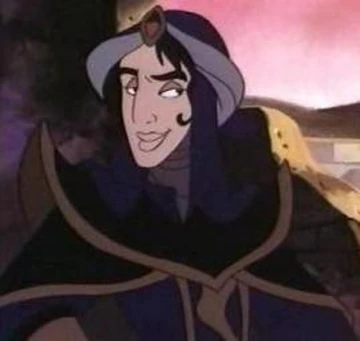
Almost certainly the most popular and iconic villain in a series that, as I mentioned last time, wasn’t exactly lacking in that department. The Citadel is his first appearance and, in my opinion, represents what this series was really capable of when firing on all cylinders.
We begin with Agrabah under attack from a mysterious pterodactyl like creature while a shadowy figure watches from the sidelines. Aladdin shows up on carpet and tackles the pterodactyl only to get knocked down and almost fall on to a bed of nails. We then cut to…

…Genie literally watching the episode and looking through the script and realising that right about now is when he should be swooping in to Deus Ex Machina Aladdin out of danger. So right off the bat the episode is not only acknowledging the problem with Genie’s power that I mentioned in the intro, it’s flaunting it. After being rescued by Genie and defeating the monster, Aladdin confronts Mozenrath who reveals that this was all a test and that he passed. He offers Aladdin great wealth if he does a job for him and Al refuses, disgusted that Mozenrath would endanger innocent people.
So, Mozenrath sneaks into Aladdin’s hovel (yeah, he still sleeps in the hovel sometimes I don’t know why, the view is not that good) and steals the lamp. He then whisks Aladdin, Iago, Abu and carpet away to his kingdom, the Land of the Black Sand.
Iago, of all people, recognises where they are and tells Aladdin that the Land of the Black Sand is ruled by Destane, a dark sorceror so dangerous that even Jafar steered well clear of him. Mozenrath casually remarks that Destane was his adopted father and introduces them.
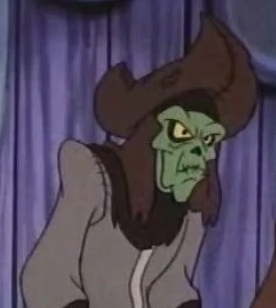
So in like a minute we get a rather fabulously layered bit of both world building and character establishment. We learn that there was a sorceror leagues above Jafar and then we learn that this new guy not only defeated him, but turned him into an undead slave to guard his palace. And he did that to his own father. It’s that combination of power and cruelty that really makes Mozenrath such a memorable villain.
So, Mozenrath tells Aladdin and the gang what the skinny is. He has a creature called a Thirdac that he used to guard his palace. The Thirdac, y’see, devours magic but unfortunately for Mozenrath it escaped and he can’t go near it because he’s mostly magic and hair gel. So Mozenrath needs a mortal like Aladdin to collar the beast. And, as incentive, he’s left Genie’s lamp in his palace so Aladdin better hurry before the Thirdac gobbles him up.
Genie, meanwhile, wakes up and finds himself staring down the Thirdac, which looks like something out of early DnD.
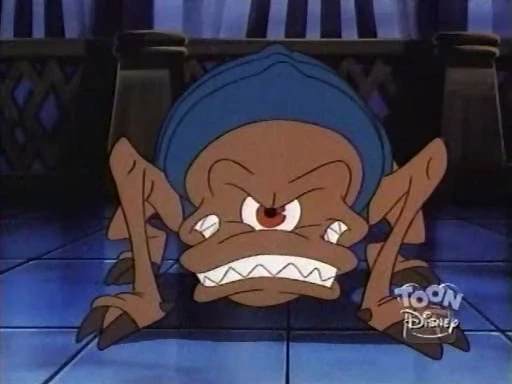
Genie quickly realises that all his semi-phenomenal nearly cosmic power is just lunch to this thing and is pretty soon running for his life. So now the show’s usual power dynamic is completely reversed. Genie is not only powerless but acutely vulnerable and we get to see how formidable Aladdin is even without his big blue pal.
Aladdin discovers Mozenrath’s lab and learns that the Thirdac is from a dimension where magic is as plentiful as water and that the creature is basically dying of thirst but that Mozenrath plans on using it to conquer every magical realm out there. They find Genie and Aladdin sees what he thinks is Genie being eaten alive and proceeds to beat the absolute tar out of the Thirdac.
 “HOW DOES IT FEEL TO BE HELPLESS?!
“HOW DOES IT FEEL TO BE HELPLESS?! HOW DOES IT FEEL TO KNOW PAIN?!
LOOK WHAT YOU TURNED ME INTO!
LOOK WHAT WE’VE BECOME! “
Genie is still alive (obviously, there’s merch to be sold) but he and carpet are very nearly devoured before Aladdin finally manages to get the collar on the Thirdac. Whereupon Mozenrath shows up and is all “thanks, I’ll take it from here”. Aladdin pretends to meekly surrender, but then he and the gang sneak back into the castle where Mozenrath is planning an invasion of Agrahbah simply because “it’s there”.
Aladdin ambushes Mozenrath and tells him he’ll free the Thirdac if Mozenrath doesn’t send it back to its home realm. Mozenrath tells him he’s bluffing, because he’s too good a person to risk Mozenrath’s life. Aladdin points out that, yes, that is true. But Iago sure as shit isn’t.
 “I’ve killed before, kids! And I’ll kill again!”
“I’ve killed before, kids! And I’ll kill again!”Iago sets the creature free and Mozenrath has to banish it back to it’s own realm to save his own life. He’s about to get revenge on Aladdin but Genie is back at full power so Mozenrath takes the L and tells Aladdin that he’s won “for now”.
How was it?
This was my favourite episode so far. I love the hints of a wider world that are introduced here. Mozenrath’s introduction gives the series its greatest villain and for once it really feels like our heroes have their backs against the wall and are fighting for survival. And, once again, I love what they’re doing with Iago. The idea of the parrot being the Wolverine of the group, the one who’s not afraid to get his feathers dirty, is so fun.
September 17, 2025
“Up! Up! And AWAY!”
Yeah, I’m sure you’re all shocked. After watching James Gunn’s Superman I decided it was high time that the big blue boy scout got the same treatment as a certain pointy eared co-worker of his.
So yes, we’re going to be looking at every live action Superman movie while we wait for Matt Reeves to finish the script for The Batman 2 roughly around the time of the heat death of the universe (I am not bitter, I am passionate.)
Let’s begin at the beginning. It’s 1948, a mere decade after Superman’s debut in Action Comics and the character is already a bona fide cultural icon with a radio series, newspaper strips, some of the greatest cartoon shorts ever made and a metric shit ton of merchandise. But, weirdly, despite kicking off the entire superhero genre (asterisk asterisk) Superman was actually pretty late to the party when it came to being adapted into live action.
Batman and Captain America both made it to the big screen before him, and even Captain Marvel had a serial in 1941, a mere two years after his debut (which is a bit like The Monkees being inducted into the Rock and Roll Hall of Fame before The Beatles). The reason for this was that National Publications (as DC was called at the time) were extremely protective of the property and wanted full control of the script. The rights being tied up with the Fleischer series also complicated matters, with the result being that work only began on the serial in 1947.
I was wary going into this, as neither of the two Batman serials were exactly a fun time. So I was astonished at just how much I ended up enjoying Superman 1948. It’s definitely a 1940s serial and as such has most of the weaknesses inherent in the format. But in terms of dialogue, pacing, direction and acting it’s leaps ahead of both The Batman and Batman and Robin.
The serial begins with the first ever live action depiction of the planet Krypton.

It’s no spectacular crystal planet but it’s nonetheless an interesting take, a rugged, rocky world rich in alien minerals.
One of the things that really surprised me was just how much of Superman’s lore is already established even at this early point in his history. Jor-El and Lara (named!), Ma and Pa Kent, Metropolis, the Daily Planet, Perry White, Lois Lane and Jimmy Olsen are all present and perfectly recognisable to a modern Superman fan. This is probably a result of National keeping such a tight control on the property, the other superhero serials of the period tended to deviate pretty sharply from their source material. But it’s also a reflection of just how strong these original concepts were, and how timeless they’ve proven.
Anyway, Jor-El has discovered that Krypton is going to be pulled into the sun and tries to convince the Kryptonian leaders to evacuate the planet. After a FIVE MINUTE scene where they bicker back and forth and tell him that if he’s smart enough to figure out that Krypton is doomed he should be smart enough to figure out how to save it if he’s not crazy or lying (which he probably is), Jor-El realises that the planet is terminally stupid and shit’s gotta be how it’s gotta be. He puts his infant son in a rocket ship and blasts him off to Earth where…fuck it, we don’t have time.

That page is going to save me so much goddamned work. So, the baby is raised by Ma and Pa Kent and as he grows starts to exhibit incredible strength. This culminates in a scene where young Clark Kent rescues his father from a twister and then drives him home.
 “Son, I’m mighty disappointed. By rescuing me from that twister you risked revealing your true iden…hahaha, I’m just kidding. Can you imagine? Thanks Clark.”
“Son, I’m mighty disappointed. By rescuing me from that twister you risked revealing your true iden…hahaha, I’m just kidding. Can you imagine? Thanks Clark.”Clark grows to manhood and his parents finally reveal to him the truth about his origin. After his parents both die offscreen (seriously, it’s scene, parents dead, next scene) young Clark Kent heads to Metropolis to seek his fortune.
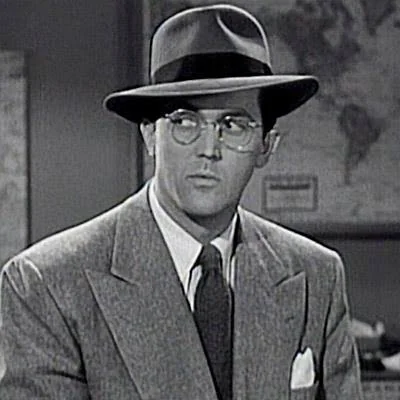
So this Kirk Alyn, who holds the distinction of being the first actor to play Superman in live action. And…he’s kinda great? I wasn’t expecting much given that he’s almost never in the conversation when greatest screen Supermen are discussed but I think he should be. For starters, he clearly stamped the role hard in terms of look and mannerisms (one thing that I realised watching this movie, the Clark Kent disguise is FAR more plausible in an era where everyone wears hats). His Clark is a surprisingly sophisticated performance. When he’s around Perry White and Lois Lane he’s slightly bumbling and “aw shucks” but when he’s shaking down mobsters for leads he’s a real newshound; serious, canny and steely. And his Superman made me realise what the most important thing about any Superman performance is: Superman has to seem like he enjoys being Superman. And Alyn fucking nails that. Whether he’s flying out a window, blowing out a fire or man-handling gangsters, he has the same infectious joy of an eight year old playing Superman. He loves his life. He loves that he gets to do this. He gets to fly around the city like a big blue rocket helping people and that is awesome.
Speaking of the flying, if you’ve heard anything about this serial it’s probably the flying scenes and that’s because they look like this:

Originally, it was planned that the flying scenes would be done with wires. These scenes were shot (which apparently was torture for poor Kirk Alyn) and looked so bad that the director fired the effects team and had all the flying scenes redone in hand drawn animation. Are they convincing? Absolutely not. Are they probably the most mocked aspect of this whole production. You bet your ass they are. But I’ll let you in on a little secret. I fucking adore the flying scenes. Not just because they’re gorgeously animated, not just because it looks like Kirk Alyn is momentarily turning into the actual comic-book Superman. I love them because they show an absolute refusal to compromise. Producer Sam Katzman understood that kids did not want to see a nerfed Superman. They wanted to see a Superman who flies around, not a Superman who shows up in a doorway after a shot of a crowd looking up and pointing at the sky. He gave his audience what they wanted and didn’t care if he looked silly doing it and I respect the hell out of him for that.
Anyway, while waiting for a train to take him to Metropolis, Clark learns that the track is damaged and that there’s a locomotive barrelling towards disaster. On the train, we get our first look at the second most important Superman character.

So this is Noel Neill (Jesus, even her name is perfect for comics) as our first live action Lois Lane. And, like Alyn, she pretty quickly shot to the top of my list of great Loises (Loisi?). Neill not only played Lois in this serial and its sequel, she was even invited back a decade later to reprise the role opposite George Reeves on television. She also cameoed in the 1978 Superman, the eighties Superboy series and Superman Returns. Neill’s Lois is a lot younger than most Loisi (Neill was still in her twenties) and she comes across as less “star reporter” and more “gutsy young cub with everything to prove”. There’s even a little subtle (possibly unintentional) feminist commentary with Lois constantly having to prove herself to Perry White, who constantly threatens to banish her to the “women’s pages”. She does frequently get bound and gagged by the bad guys only to be carried away in Superman’s manly, manly arms, but no more than Jimmy Olsen so it’s fine. She’s presented as tough, fearless, canny, perfectly willing to dick over a colleague to get a scoop but willing to take the blame for her mistakes. In short, everything Lois Lane should be. And her office rivalry with Clark is just great. Unlike the Batman serials which just jogged in place, there is actually character development from episode to episode. Lois and Clark start out as rivals with Lois actually getting him falsely arrested at one point just so she can get a head start on a story, but by the final episode they’re bantering and working together as a team.
Superman’s first public appearance comes after when he’s waiting for a train and learns from the signal man that one of the tracks has been bent and that the next train will surely derail. He changes into the costume for the first time and bends the track back into place, saving everyone on the train. Lois Lane and Jimmy Olsen happent to be on the train and are all “golly, what a story!” but don’t meet Clark properly until later on. Walking into the Daily Planet, Clark is able to convince Perry White to let him cover a mine disaster and get an interview with some trapped miners. This was a really common trope in old movies, reporters trying to get interviews with trapped miners. I have no goddamned idea why. What do they think the miners are going to say?
“Ow?” “Help me?” “Thank you for your interest but my oxygen is limited so kindly FUCK OFF?”
Anyway, Clark gets the scoop, rescues Lois from a cave-in as Superman and then beats her and Olsen back to Metropolis which leads to honestly one of my favourite “Clark meets Lois” scenes. After she spends a few minutes bad mouthing the “rat” who scooped her he reveals himself from behind a paper, tips his hat to her in a gentlemanly manner and introduces himself as “the rat”.
But that’s only the beginning of our story. Metropolis in the forties, much like her sister city Gotham, is plagued by the scourge of White Guys in Fedoras. These malefactors are led by a sinister and brilliant mastermind known only as The Spider Lady.
 Not to be confused with your mother who was asked to chaperone the school Halloween dance at short notice.
Not to be confused with your mother who was asked to chaperone the school Halloween dance at short notice.So yeah, Superman’s first supervillain in live action was a woman, which is cool. It would be a whole lot cooler if she didn’t suck but you can’t have everything. I don’t want to place too much blame here on actor Carol Foreman, a veteran serial performer who, unusually for a woman, played almost exclusively villainous roles. She even starred with Kirk Alyn in another serial based on a DC property, Blackhawk. She was much better in that so it’s my guess that there was a time issue. Her scenes feel very much like she’s trying to remember her lines and hit her mark and hasn’t been given enough time to rehearse the scene. The mask also limits her signature icy stare, one of her chief assets as an actor, which is probably why it only appears in early episodes before being nixed.
 If Kate Mulgrew had been born a few decades earlier, she would have eaten this part alive.
If Kate Mulgrew had been born a few decades earlier, she would have eaten this part alive.The Spider Lady is a reworked version of the Red Widow from the Superman radio show, which was a much bigger influence on the serial than the actual comic book. Oh, and all her henchmen are called The Spider Lady Men, which sounds less like a criminal gang and more like a Vegas drag revue.
Anyway, the Spider Lady plans to steal something called the Reducer Ray. This is not, as you might assume, a device that shrinks people. It “reduces” in the sense of “reducing something to radioactive ash”. It’s basically a heat ray, stated onscreen to be more powerful than an atom bomb. Although, given this particular franchise’s history with the US Government’s nuclear programme I would have assumed they would have given that whole topic a wide berth. If you don’t know, in 1944 National was going to publish a story about Lex Luthor building a weird science fiction device called an “atom bomb” and the US government asked them to hold off on publishing that until, oh, let’s say 1946? Thaaaanks.
Like the Batman serials, Superman does a lot of narrative jogging in place but it does a far better job of making it feel like the story is advancing. There’s a bit of political intrigue with the Lady Spider Men jockeying for position and undermining each other.
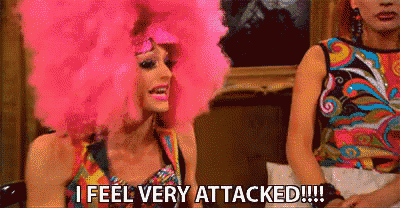
In another sideplot Kryptonite is introduced and we even see Clark revealing his secret identity to the scientist who discovered it in order to get help in combating its effects. In an era where secret identities were absolutely sacrosanct, that was honestly kinda shocking to see. And there’s also lots of fun stuff with Lois and Clark constantly trying to one up each other to get the next scoop, with the aforementioned Lois framing Clark for stealing her car and getting him locked up in jail. It’s great!
I won’t lie and say it never drags, but I found this serial genuinely entertaining, and not just in a historical curio kind of way. It captures the essential appeal of Superman very well, and I’m honestly so excited to see where we’re going next.
***
The Man of Tomorrow
Kirk Alyn walked so those who came after him could soar. A surprisingly great, and criminally over-looked Kal-El.
Ace Reporter of the Daily Planet
Noel Neill is a delight as Lois Lane, sassy, ambitious, a little petty, and with zero tolerance for anyone’s bullshit. My favourite exchange:
PERRY WHITE: I need an article of the women’s page. Dream up a new way to cook a roast, or toss a salad together.
LOIS: How thrilling.
CLARK: Cook up something good, Lois. I’ll go for it.
LOIS: (smiling sweetly) Anytime, Mr. Kent. (steely glare) Just name your poison.
A Great Metropolitan Newspaper
Pierre Watkin’s Perry White seems to have taken the whole idea of a “crusading newspaper quite literally, as his Daily Planet is less a distinguished paper of record and more a freelance law enforcement agency, sending reporters out to get leads and shut down whole criminal enterprises without all that tiresome “involving the police”. He’s a great Perry, sarcastic, curmudgeonly and yet clearly willing to take a bullet for any of his reporters. Even his belittling of Lois comes across less like sexism and more challenging her to prove the world wrong, a challenge she gleefully accepts. As for Jimmy Olsen, he’s played by Tommy Bond as a well meaning, slightly dim, “ah shucks ain’t that just like a dame?” kinda character. You might ask why they cast a middle aged man as such a young character. To which I reply: “my guys, he’s only 22”.
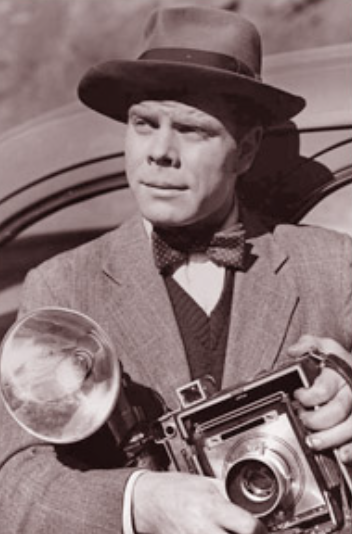 The forties were rough, man.
The forties were rough, man.Kindly Couple
So here’s a neat little bit of trivia, Jonathan Kent, one of the most important characters in the Superman mythos, was only named that in 1950. Prior to that, the Kents actually cycled through several different names before settling on Johnathan and Martha. Here, they are named as Martha and…Eben. Eben Kent.
Yeah, I see why they changed that.
Another story element that is newer than you might think is Superman’s parents surviving to see his career as Superman which only became a staple after the late eighties. Anyway, while we don’t see that much of Martha and Eben in this film, the essentials are there. Two good people found a baby and raised him as their own, and the love they showed him changed the world.
Desperate Scientists
If Superman is the “Man of Tomorrow” then Krypton is the world of tomorrow.
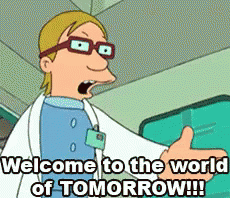
Originally envisioned as a scientific wonderland as seen through the lens of turn-of-the century progressive* utopianism Krypton often becomes a stand in for the cultural anxieties and hopes of the era in every new iteration. So what is 1948 Krypton a stand in for? Well if I had to guess, the scene of Jor-El trying to convince a room of bored bureaucrats that their world is teetering on the edge of destruction is meant to evoke…
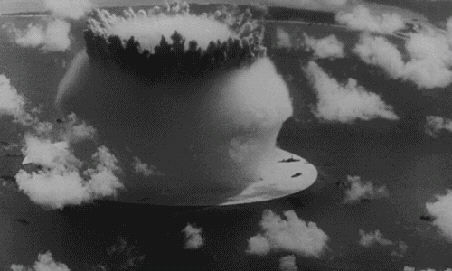
Too basic? Fine, it’s a metaphor for the inauguration of the General Agreement of Tariffs and Trade. You don’t even know what was going on in 1948! Don’t you judge me!
Our Nefarious Villains
More like the Spider Lamey.
Fuck you, I’m tired.
“With powers and abilities far beyond those of mortal men!”
This Superman is, by necessity, a bit underpowered compared to later versions, and even seems to be struggling at times when fighting ordinary gangsters (not even Superman is a match for dodgy forties fight choreography). At other times he’s shown as being strong enough to stop a moving car or bend a steel girder. He also uses invulnerability, modest super-speed, super-breath, super-hearing, X-Ray vision and “super sight”, where Superman is able to read the impressions on a broken records and reconstruct it.
FINAL SCORE OUT OF TEN:

NEXT UPDATE: 02 October 2025.
NEXT TIME: You lie, title. You lie.
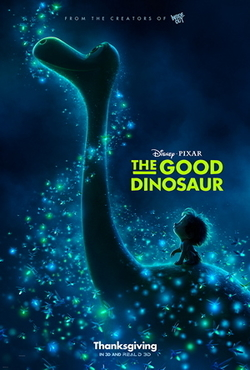
* Note that “progressive” in the early twentieth century referred to a vast constellation of modernist and anti-traditionalist movements and not (as it does today) as a synonym for left-wing politics. Some of the things these progressive advocated we would still recognise as left-wing, some we really, really, really would not.



